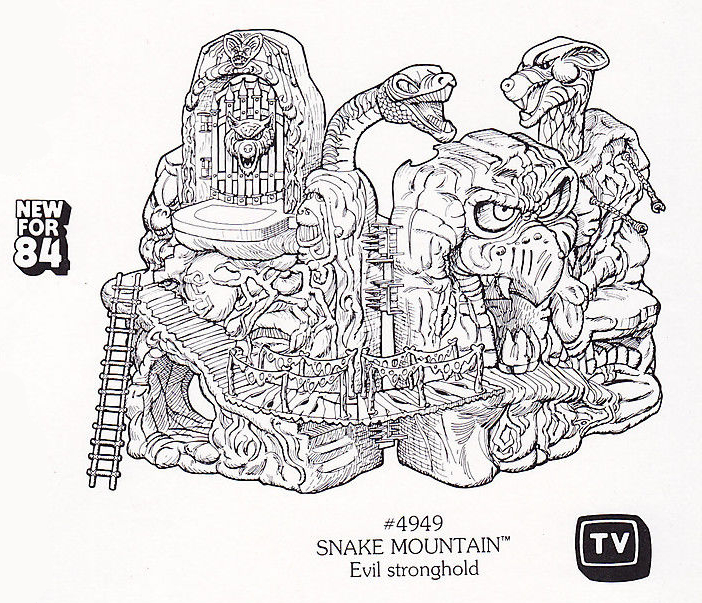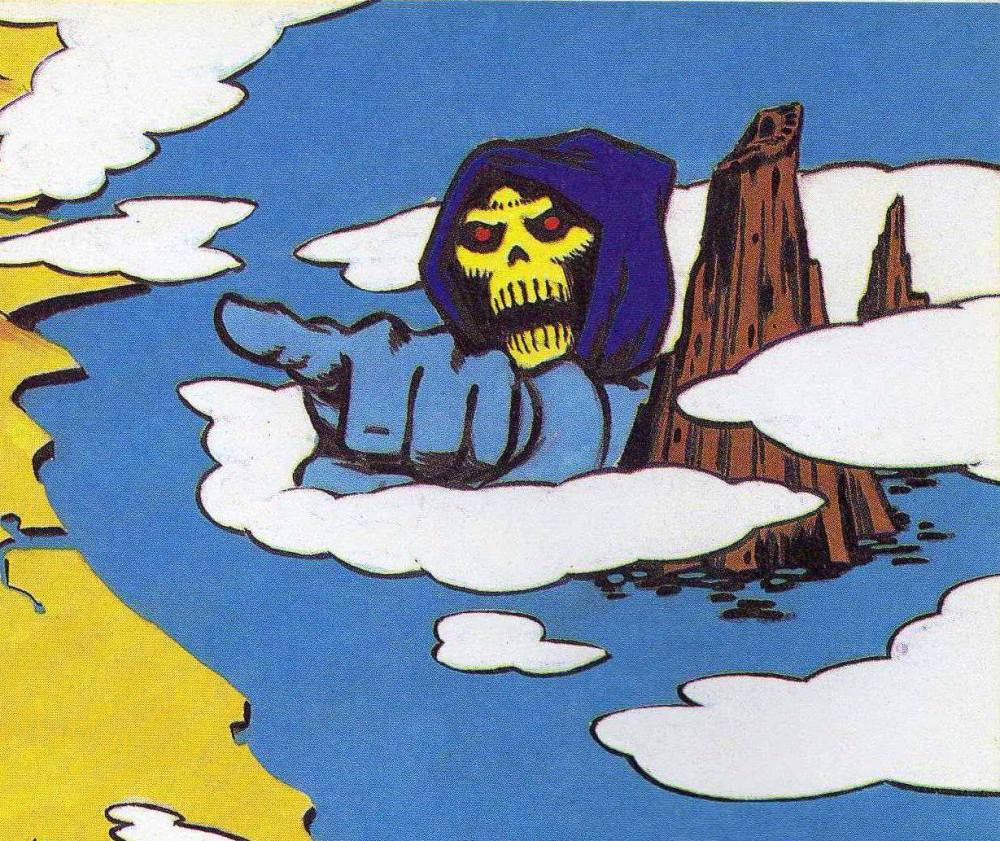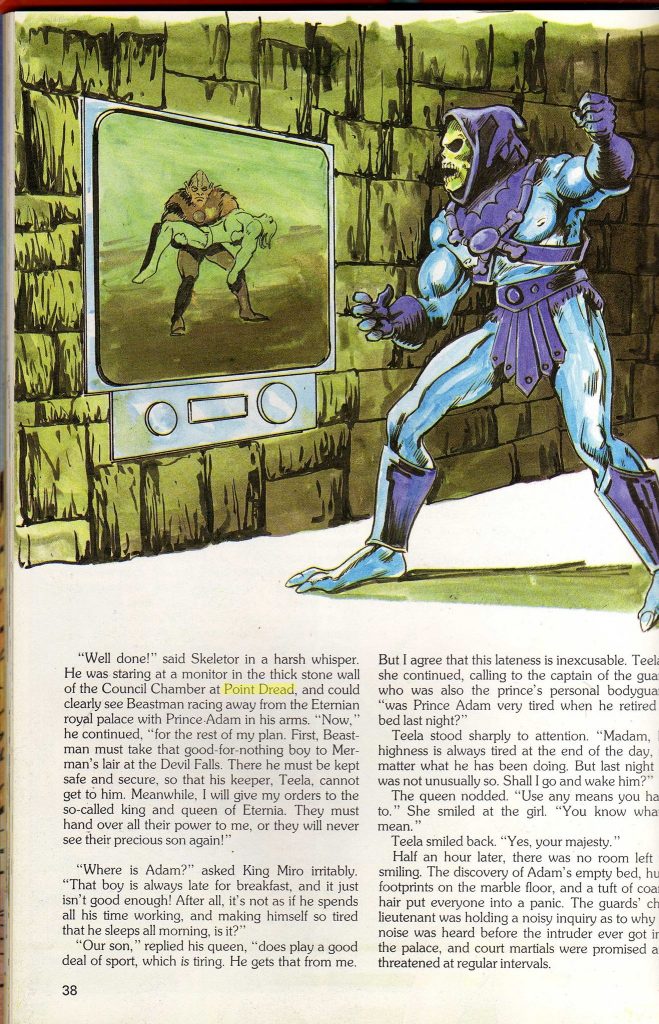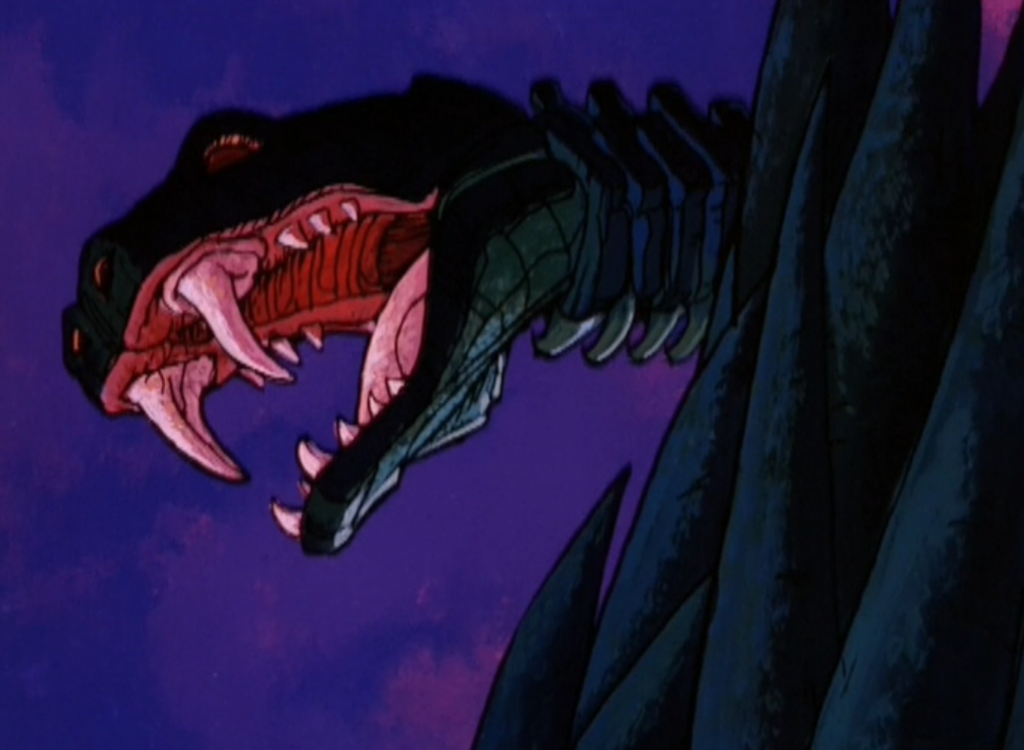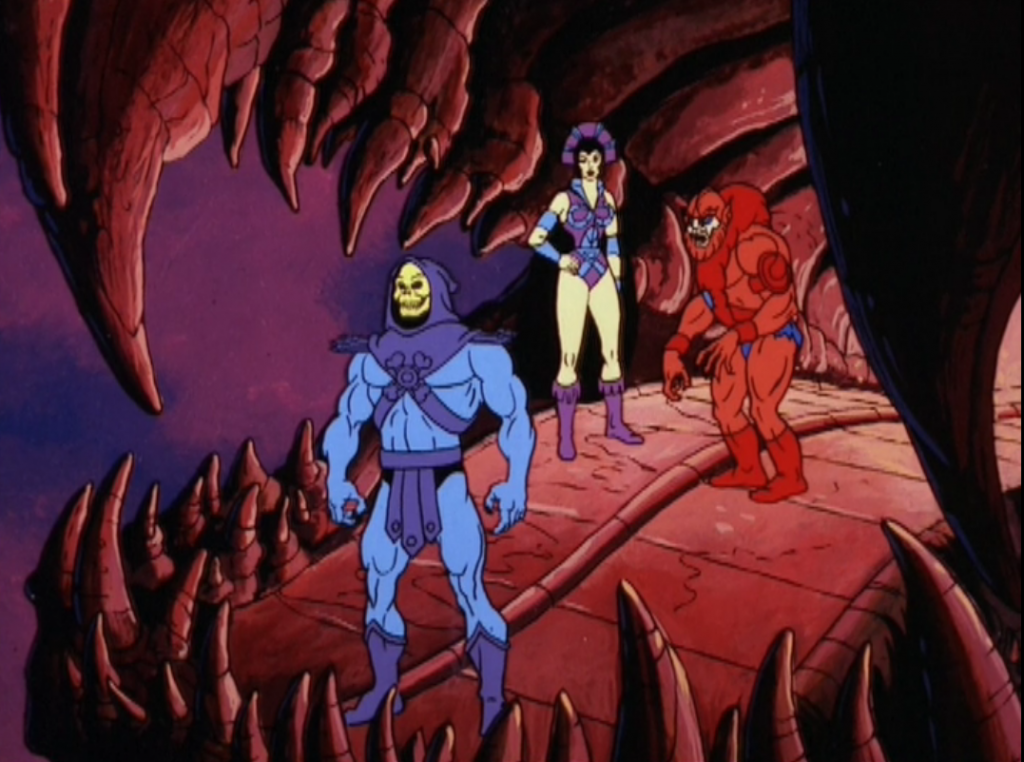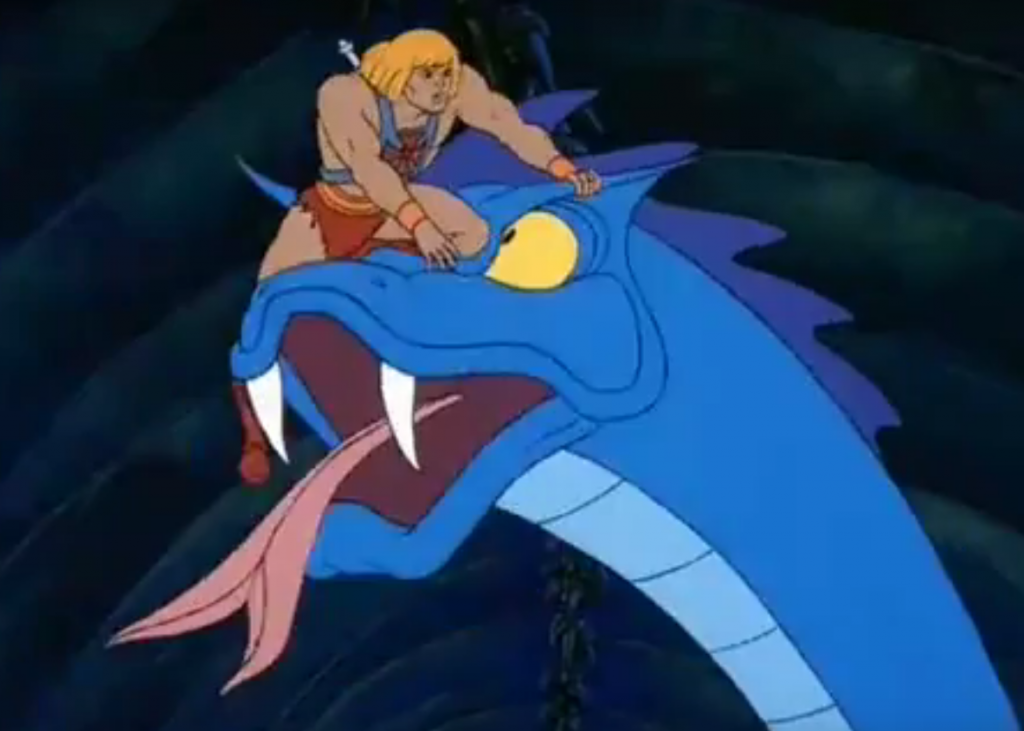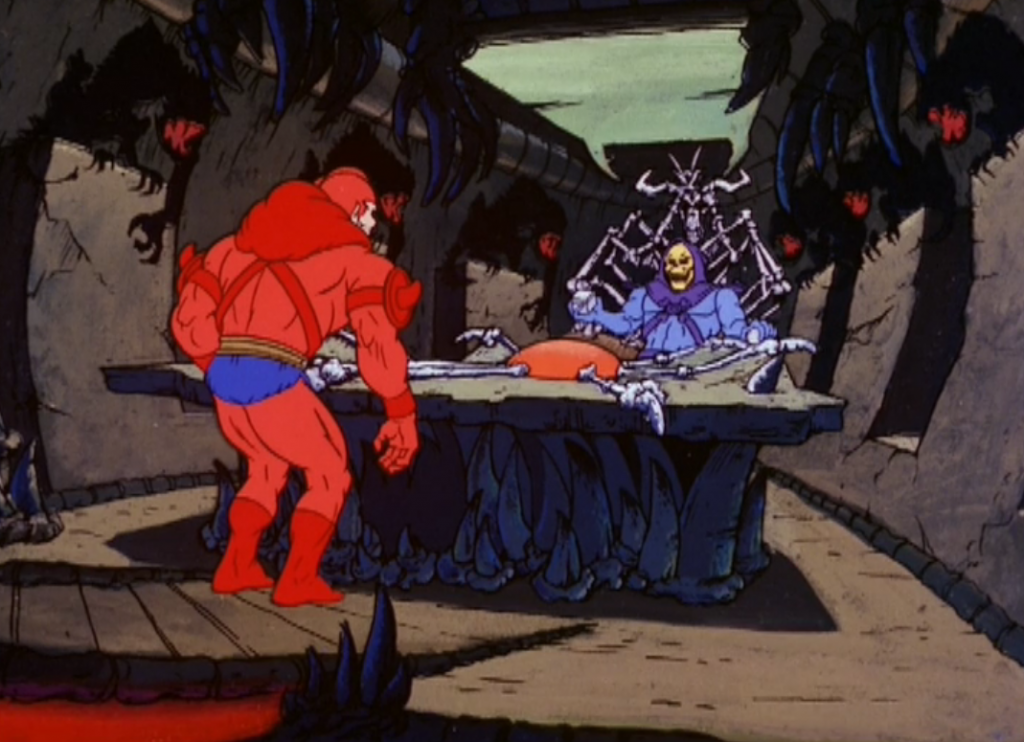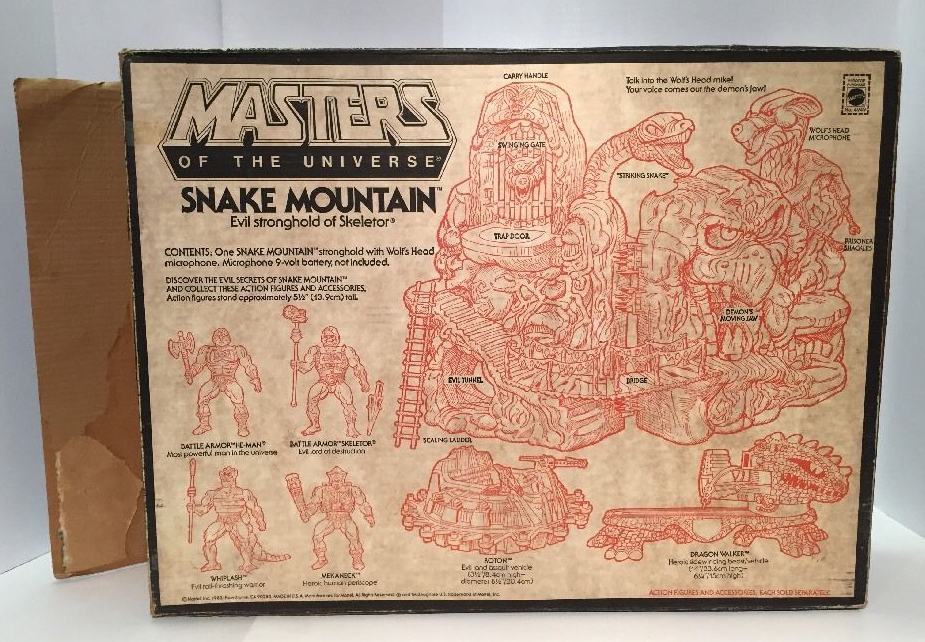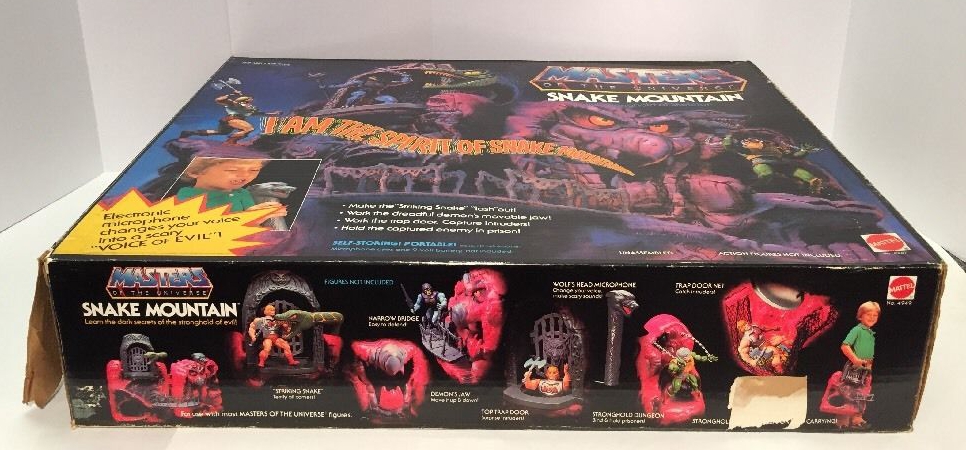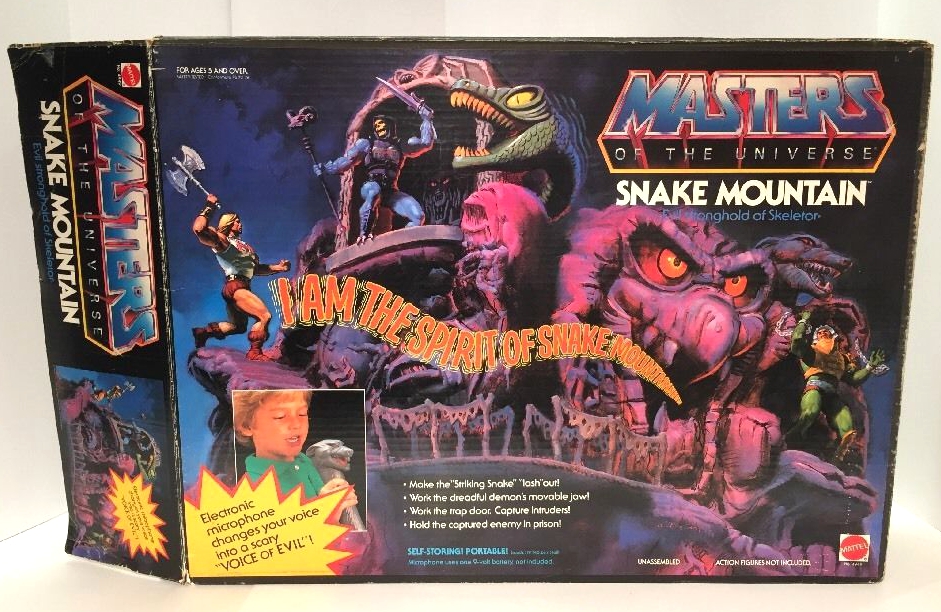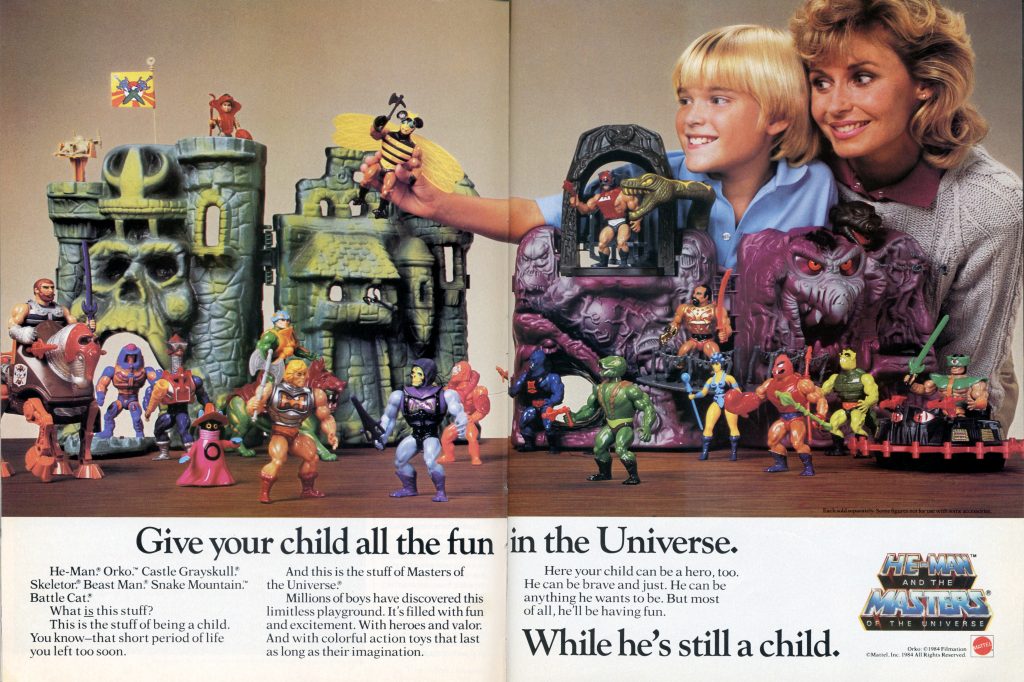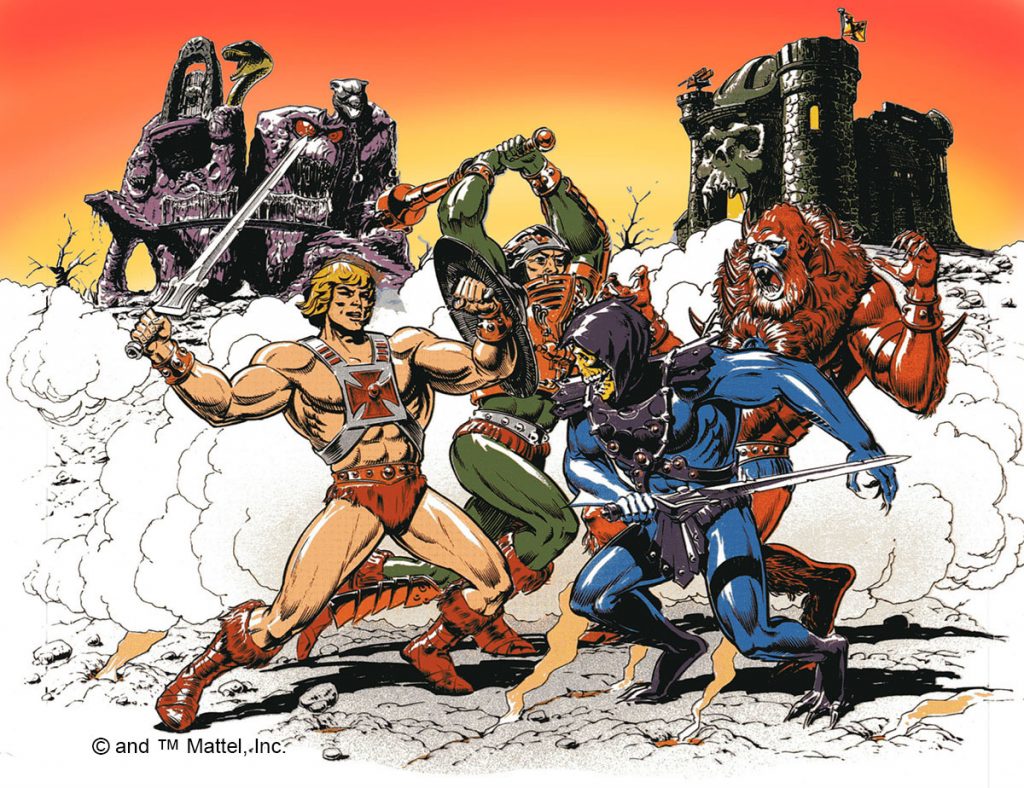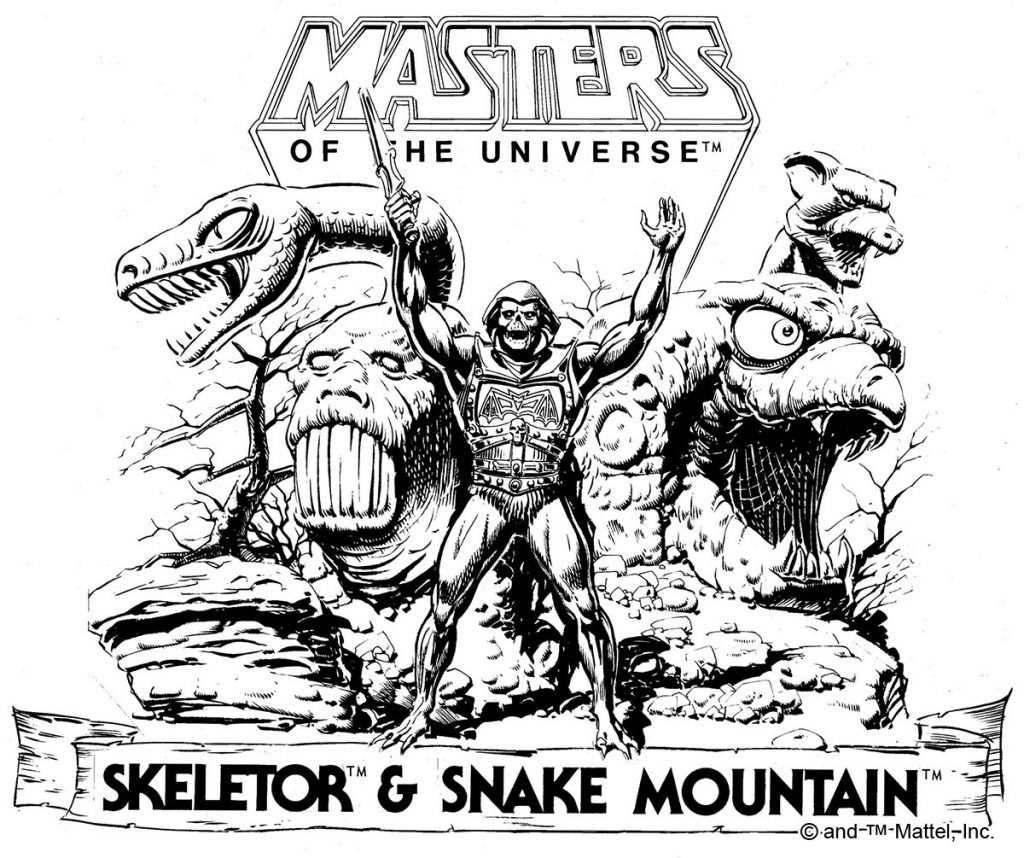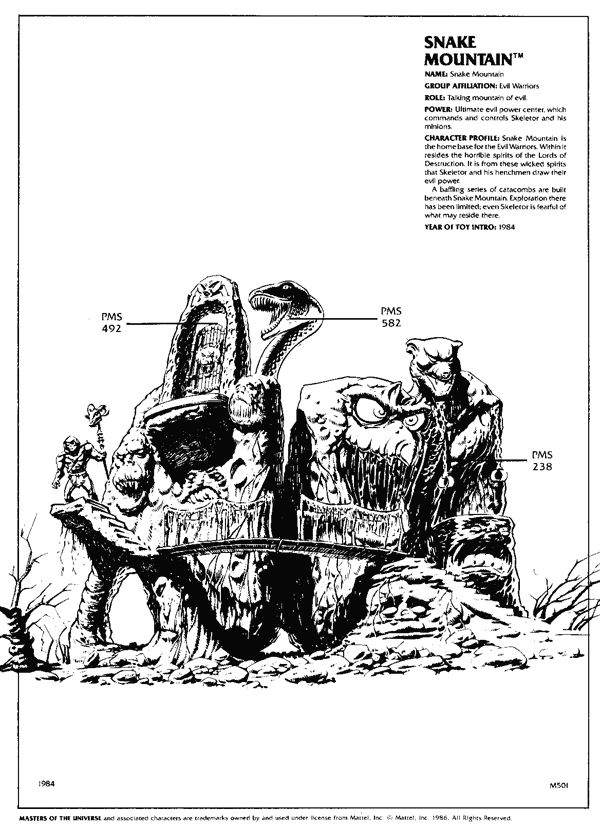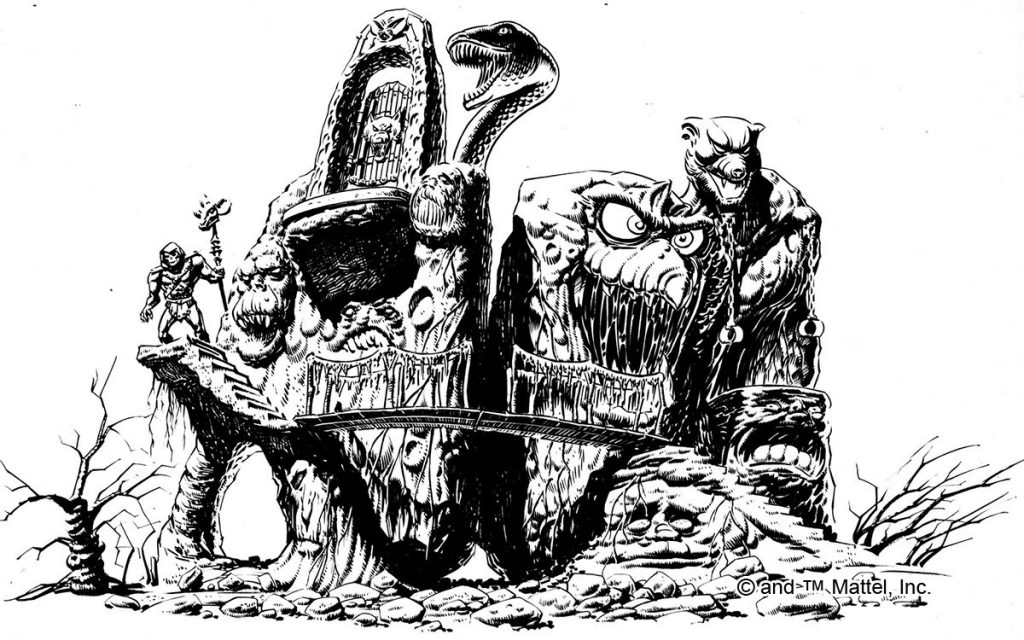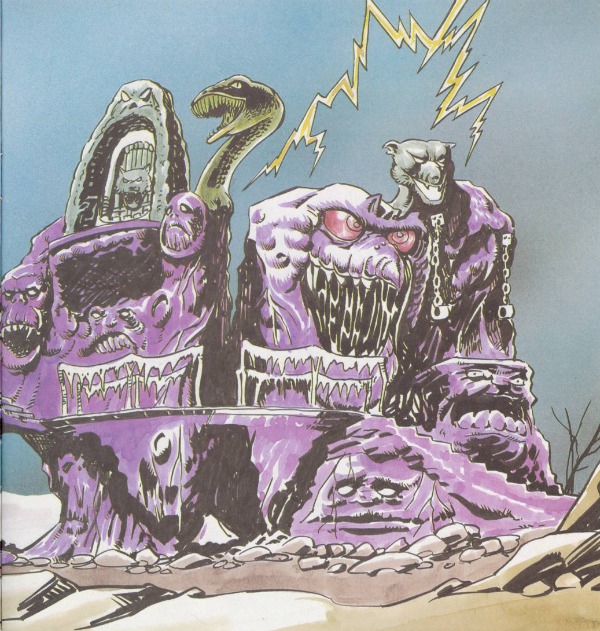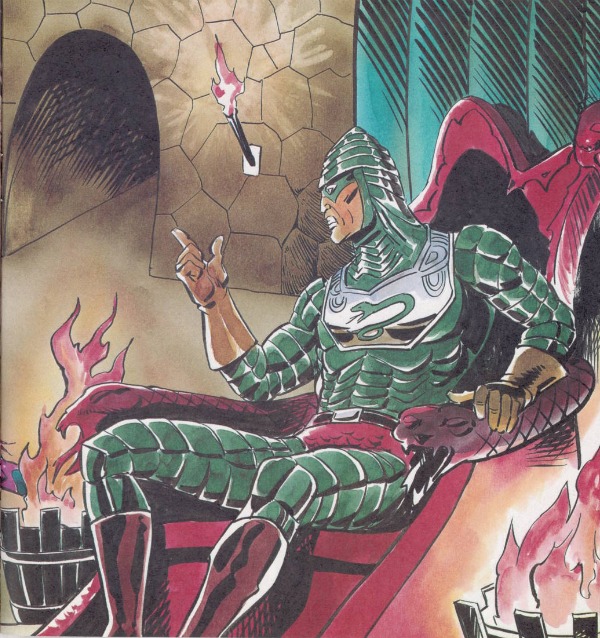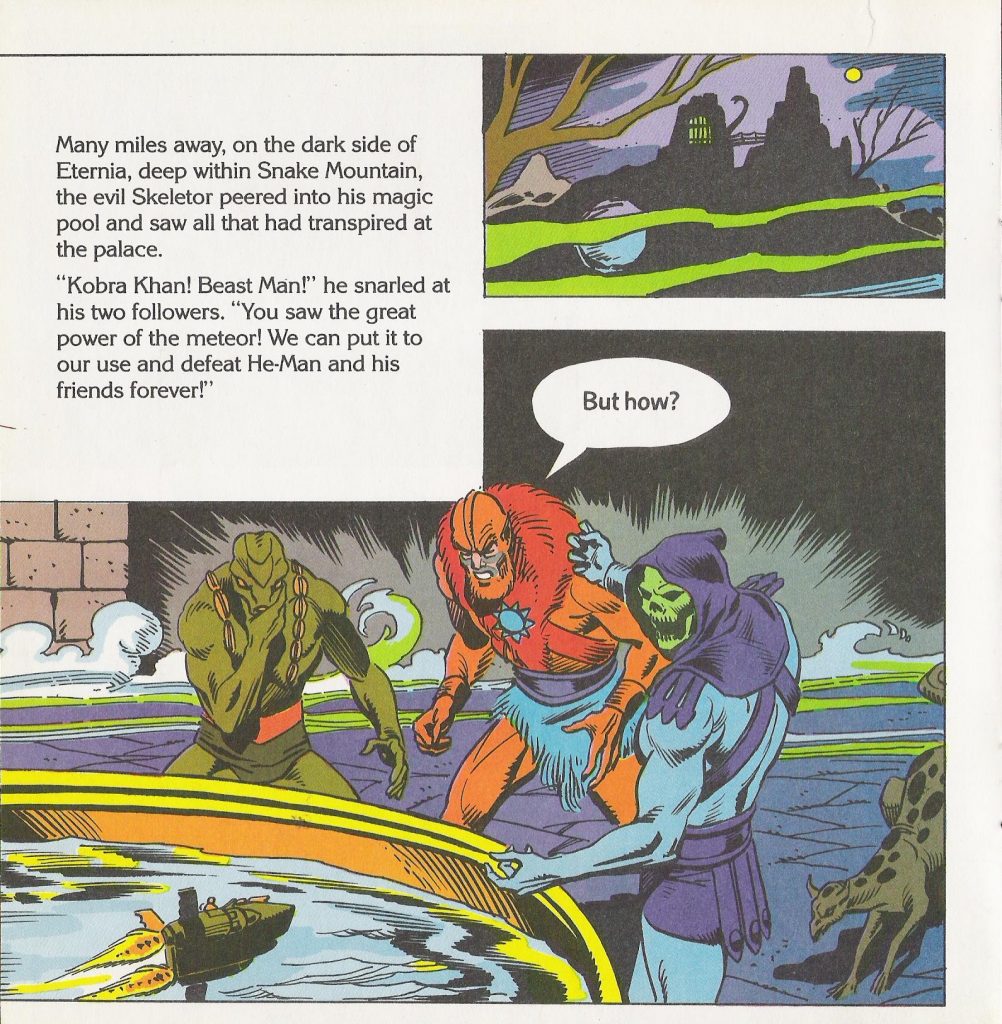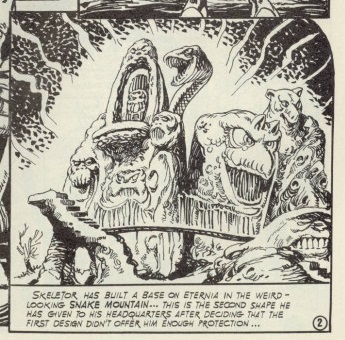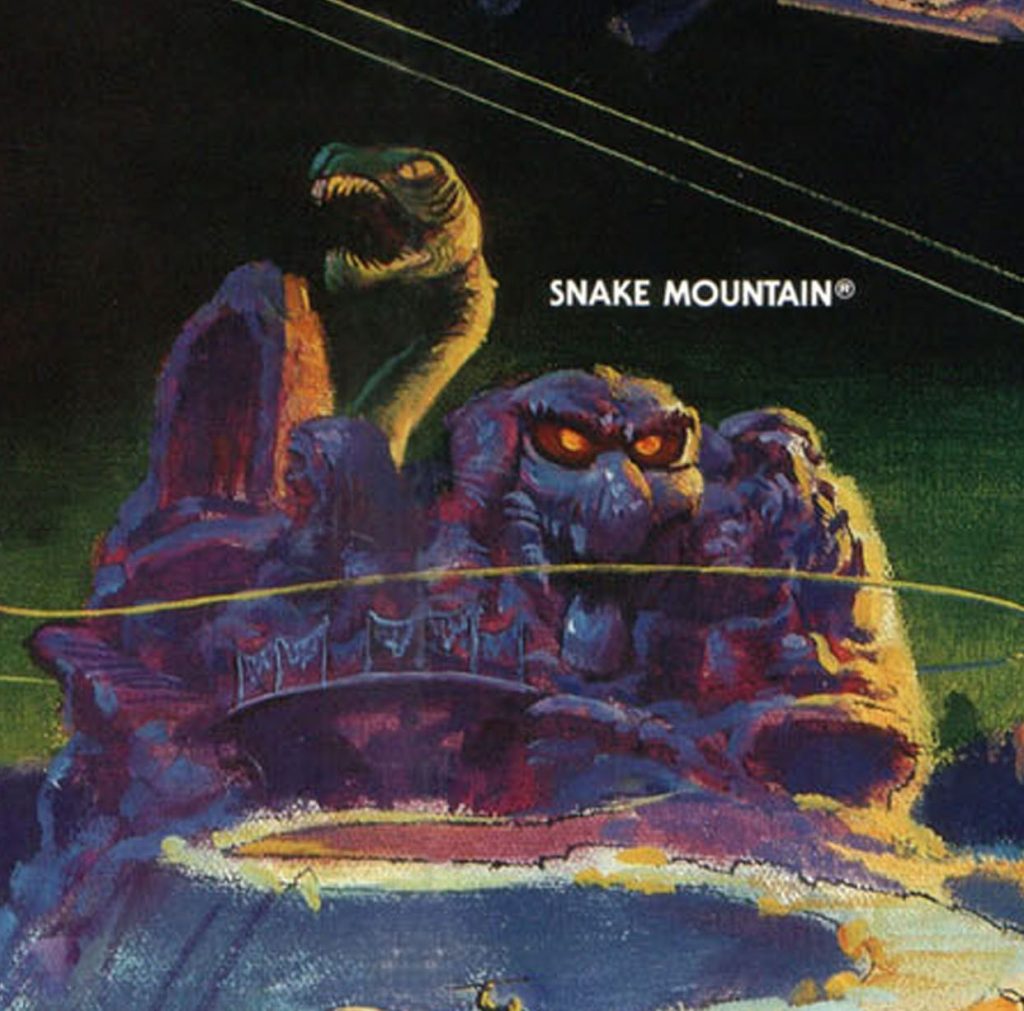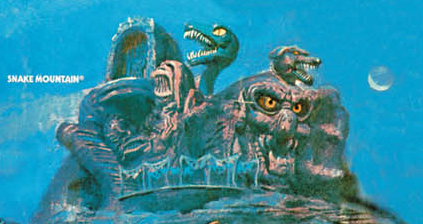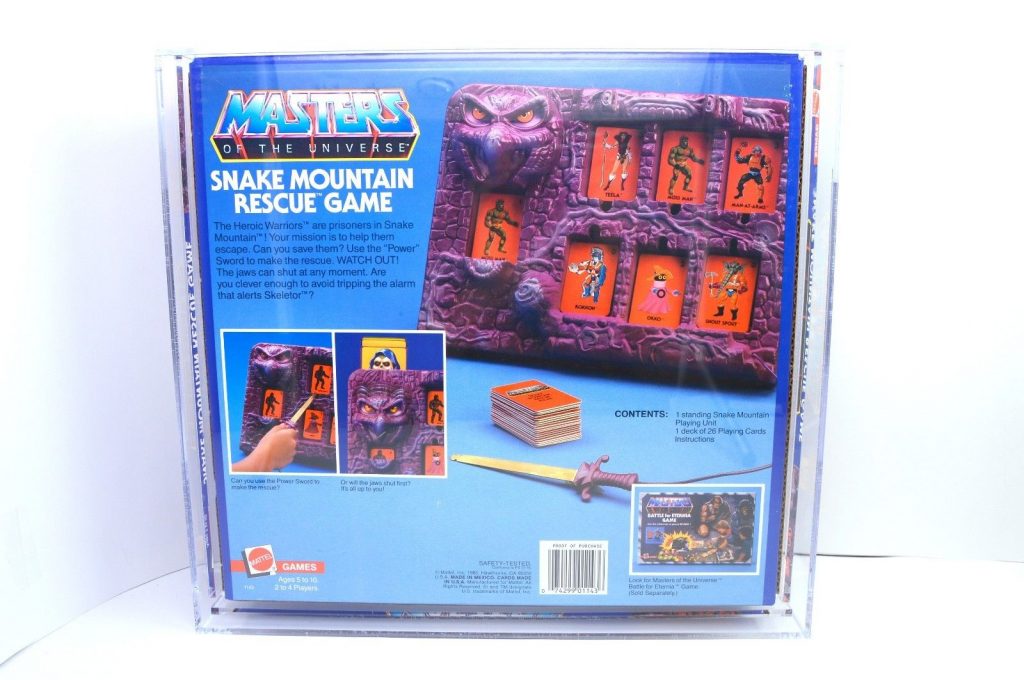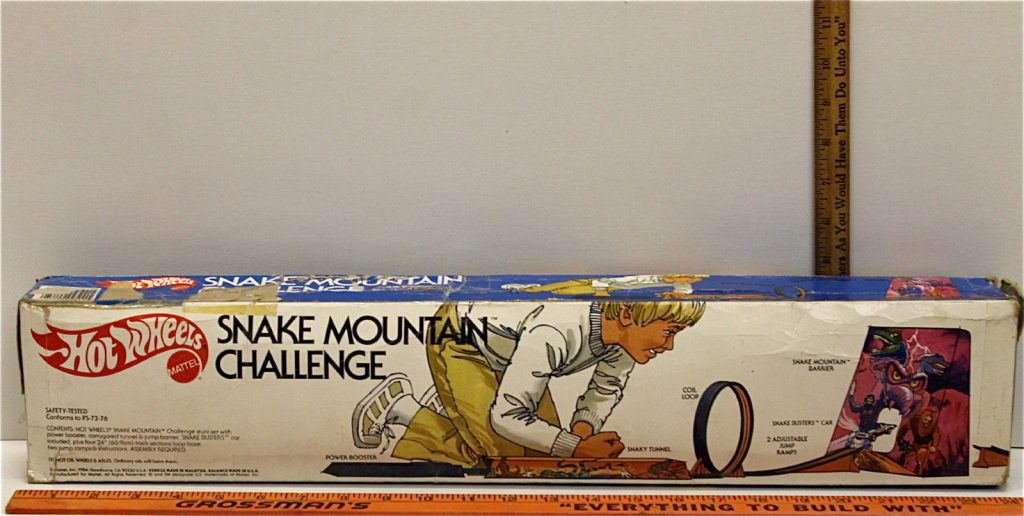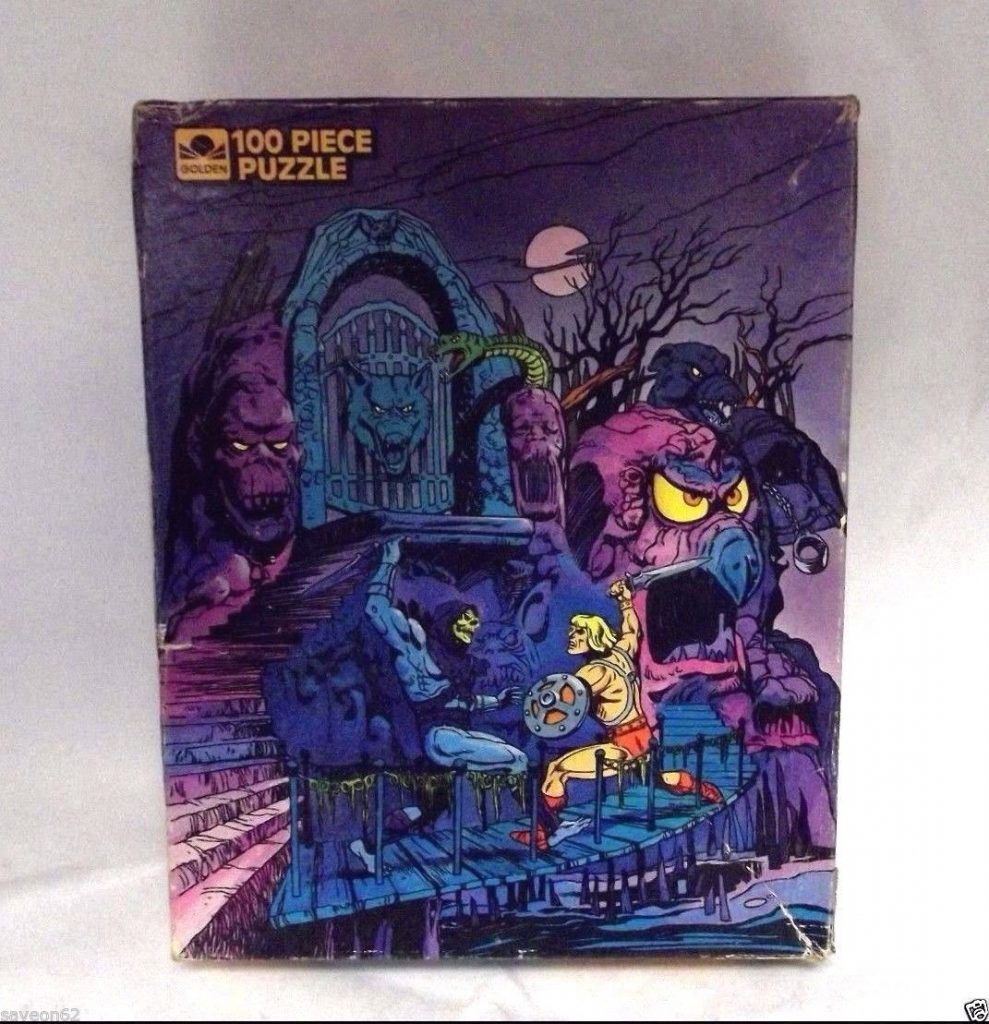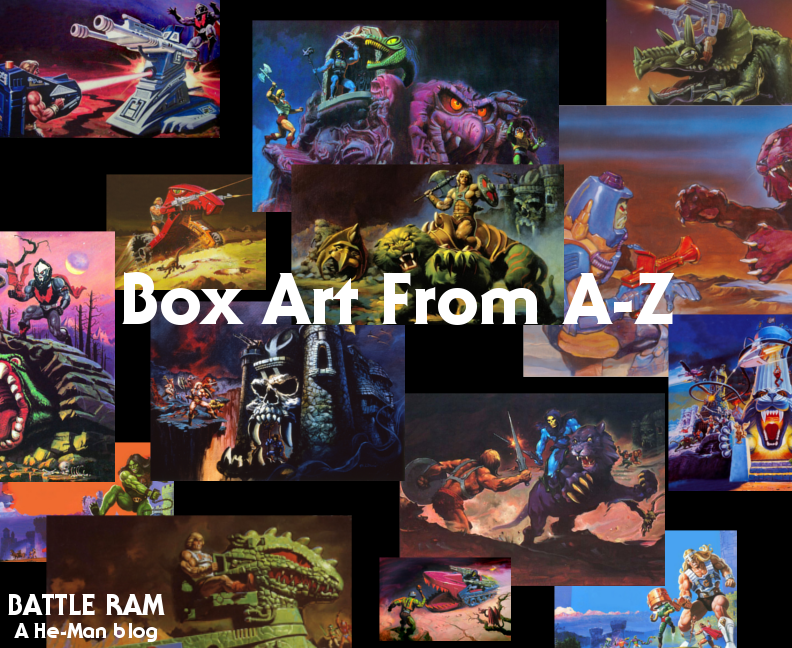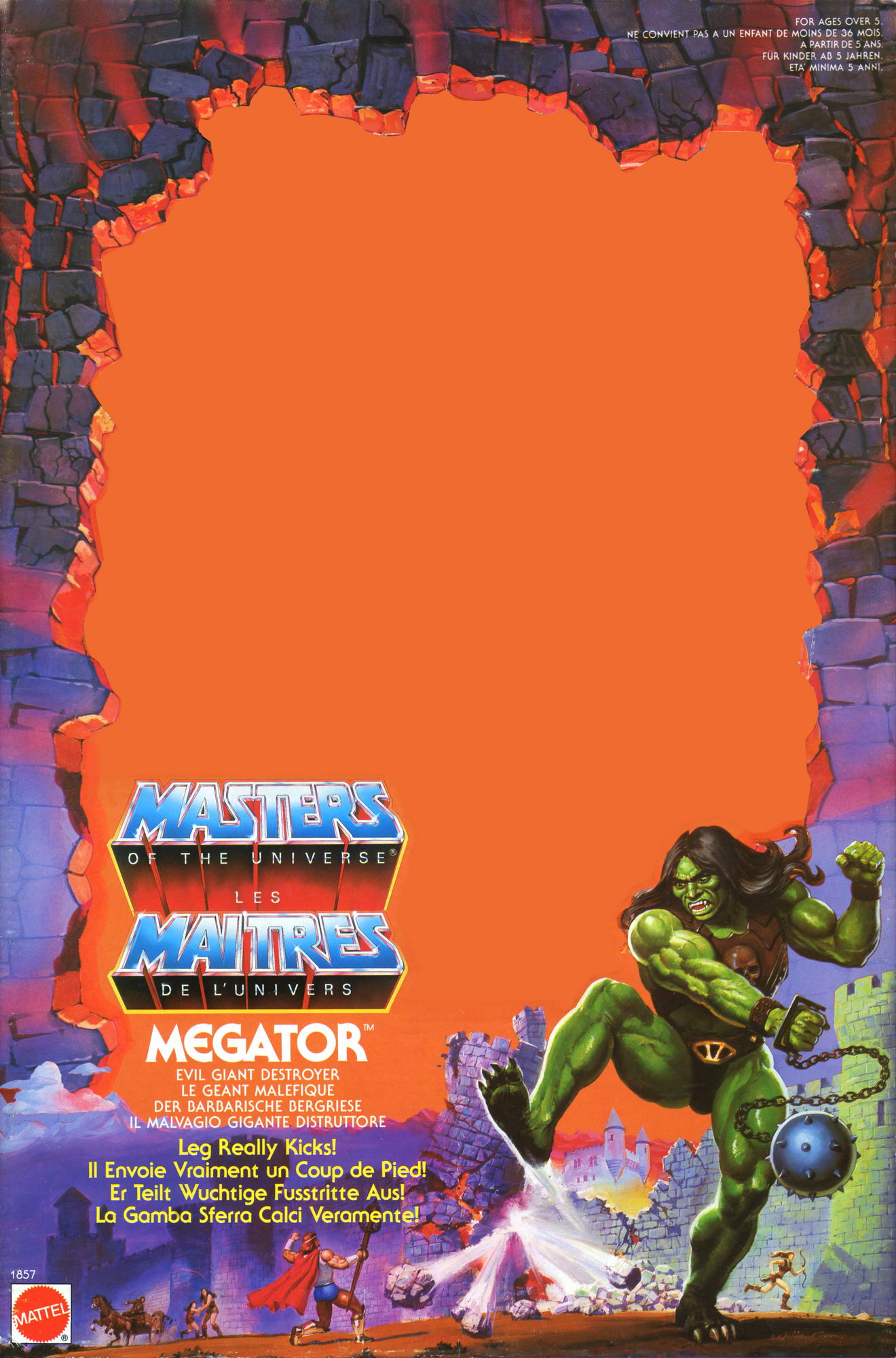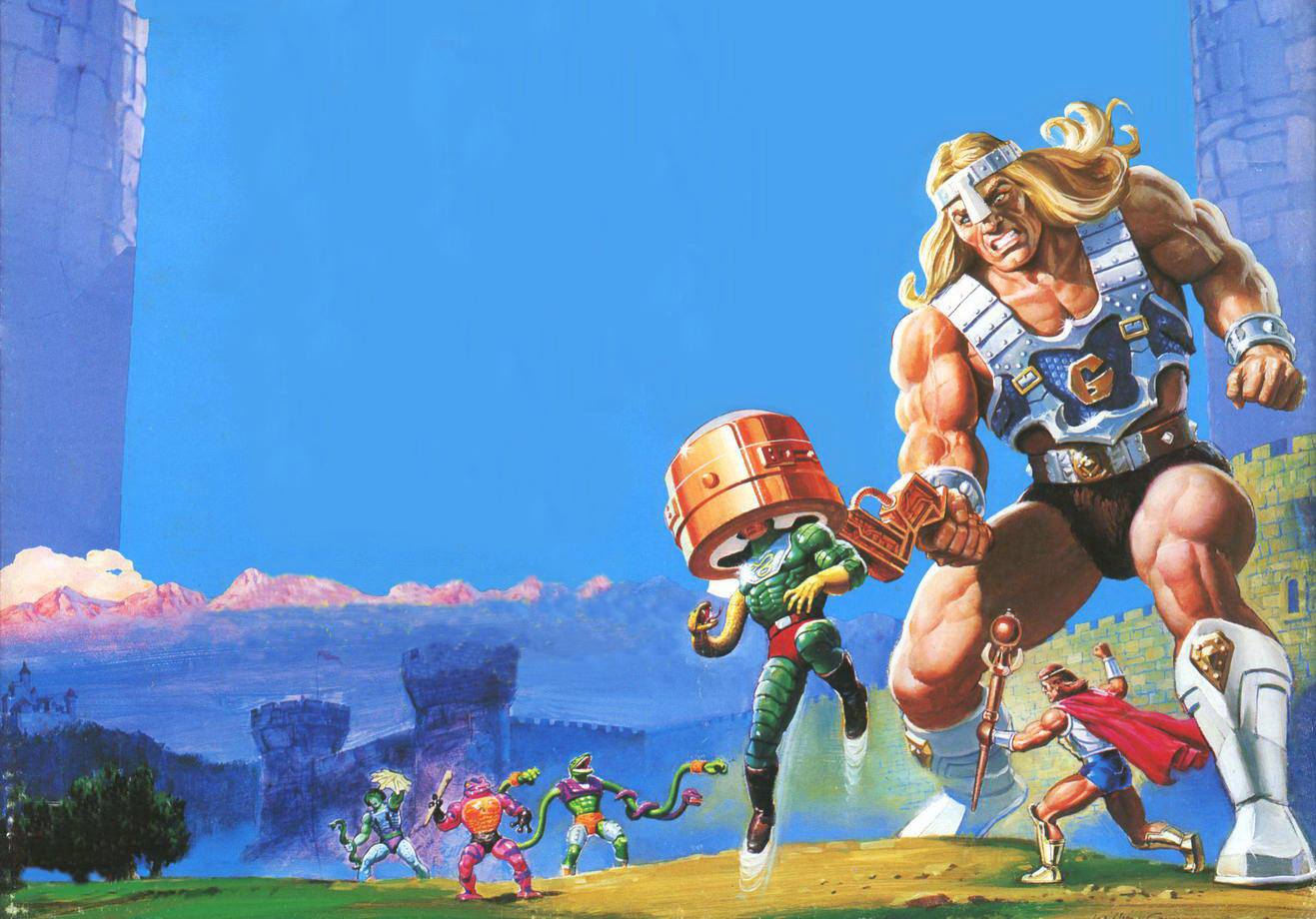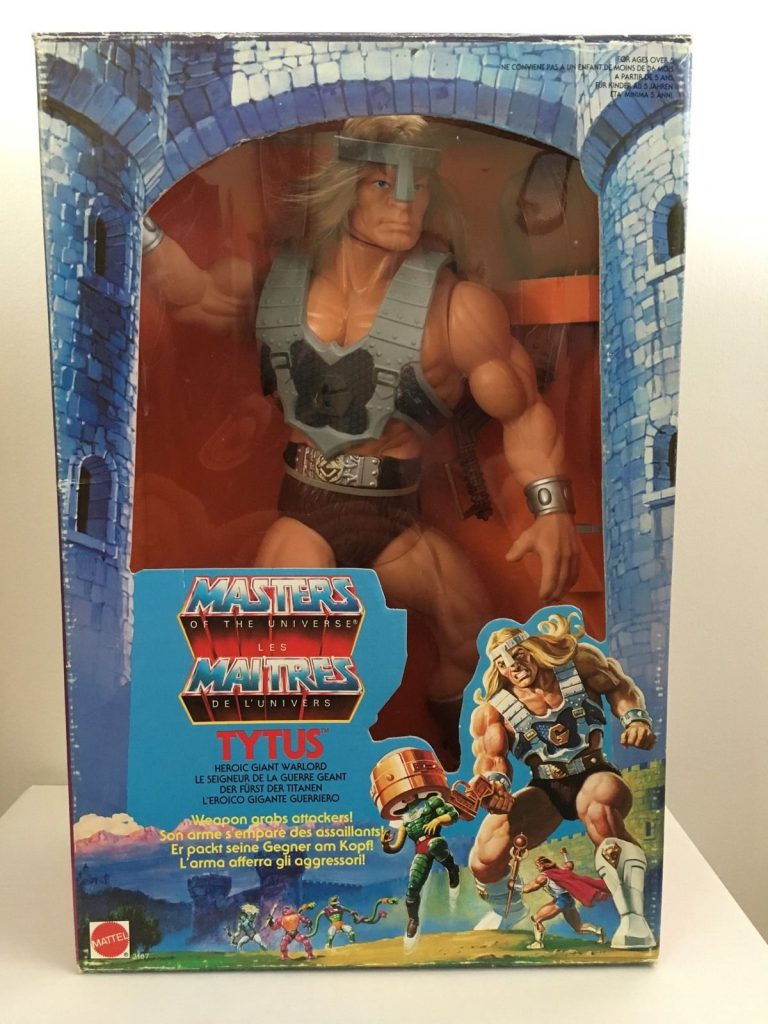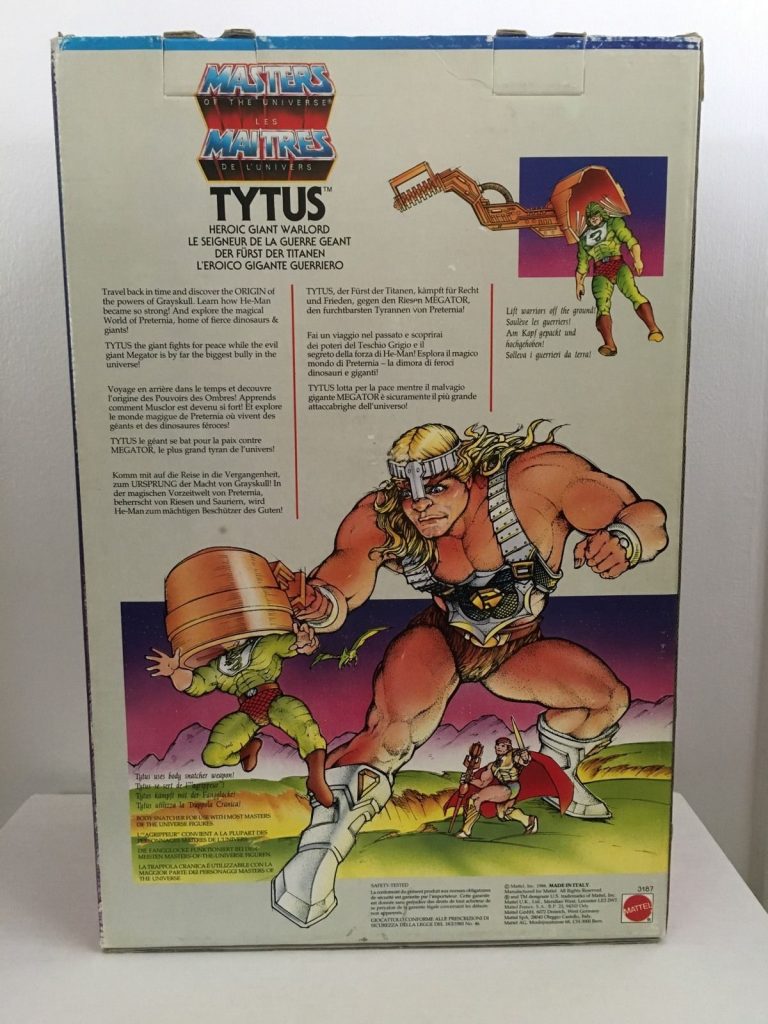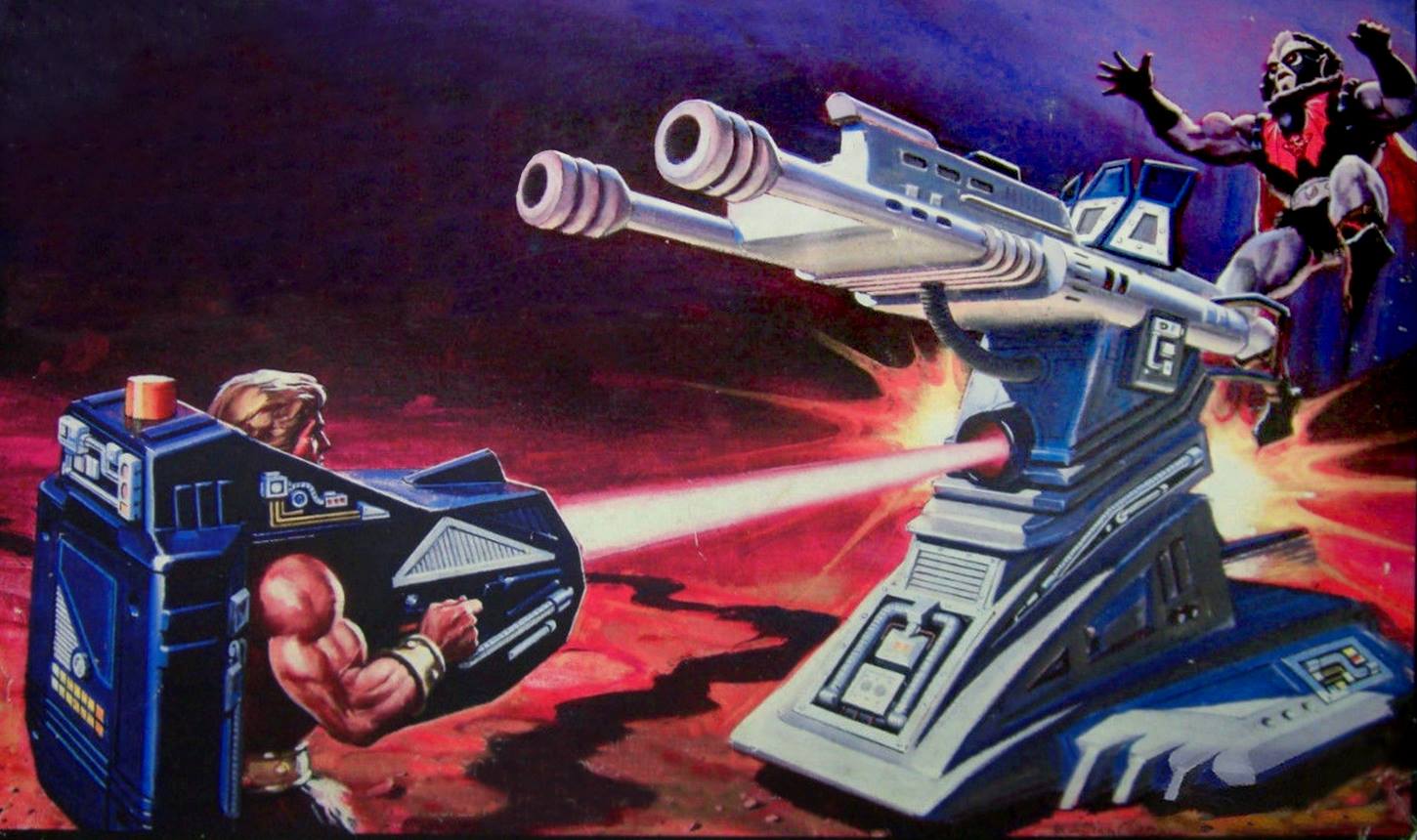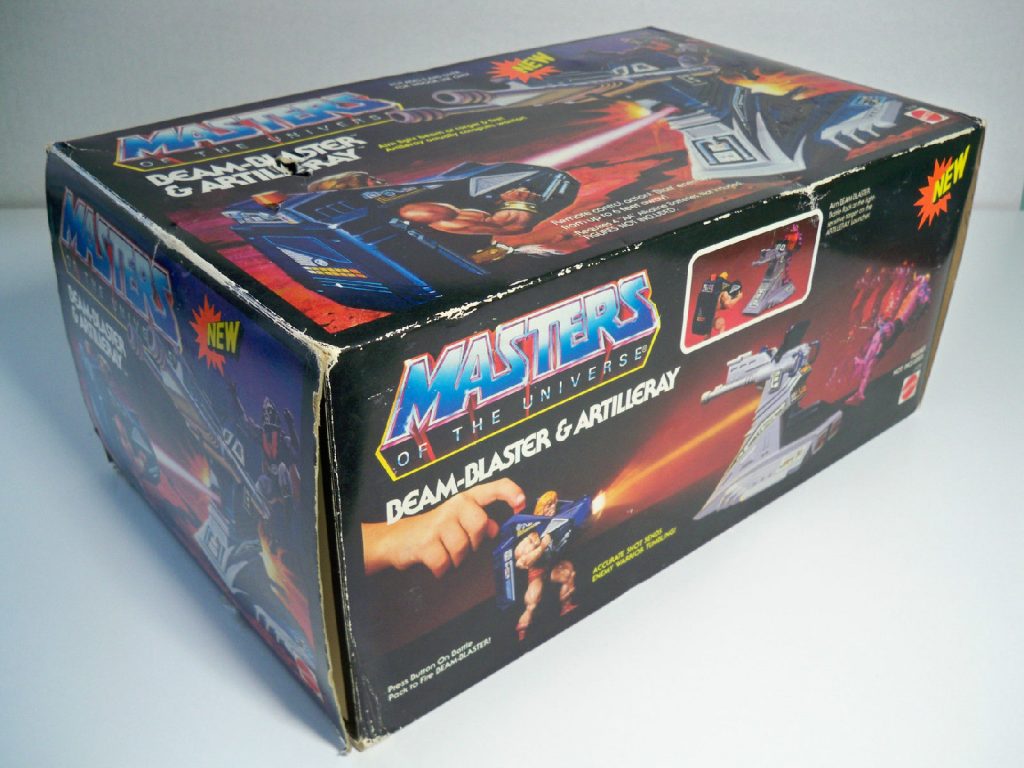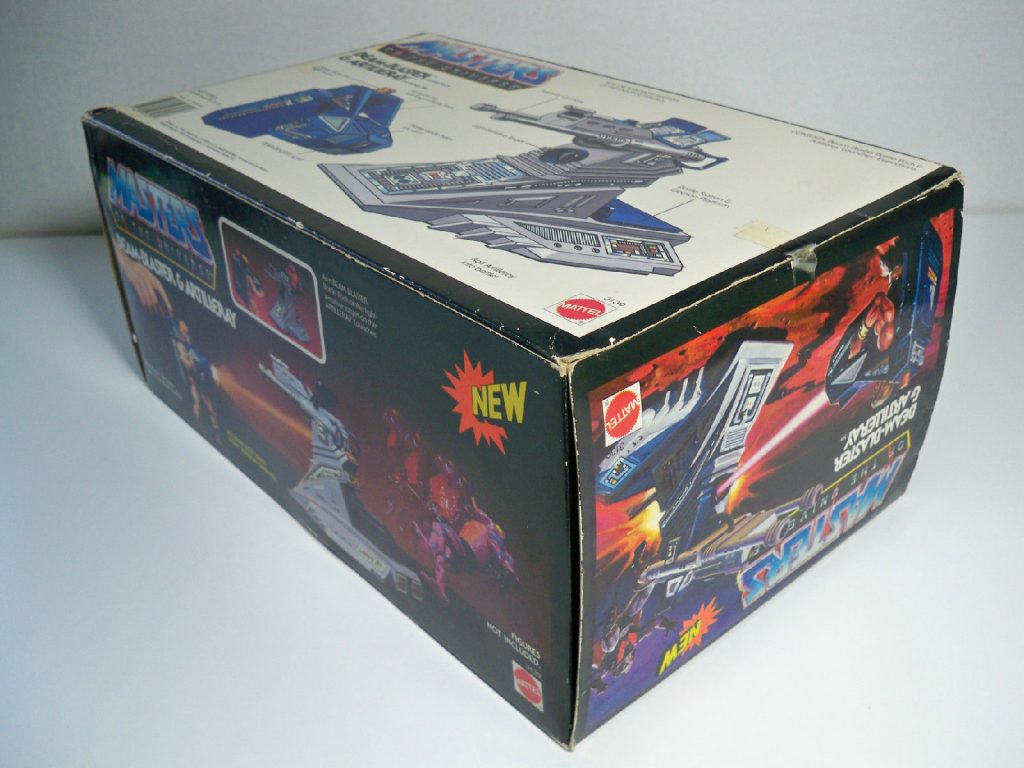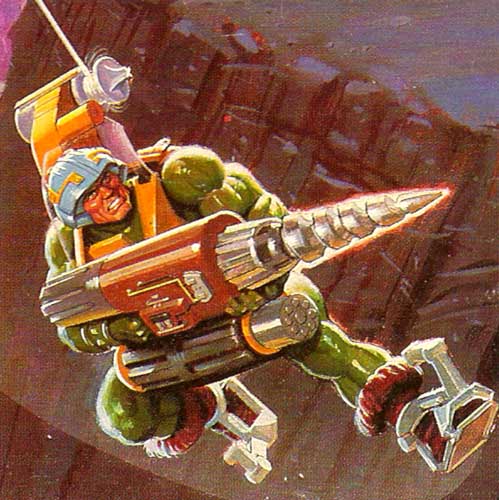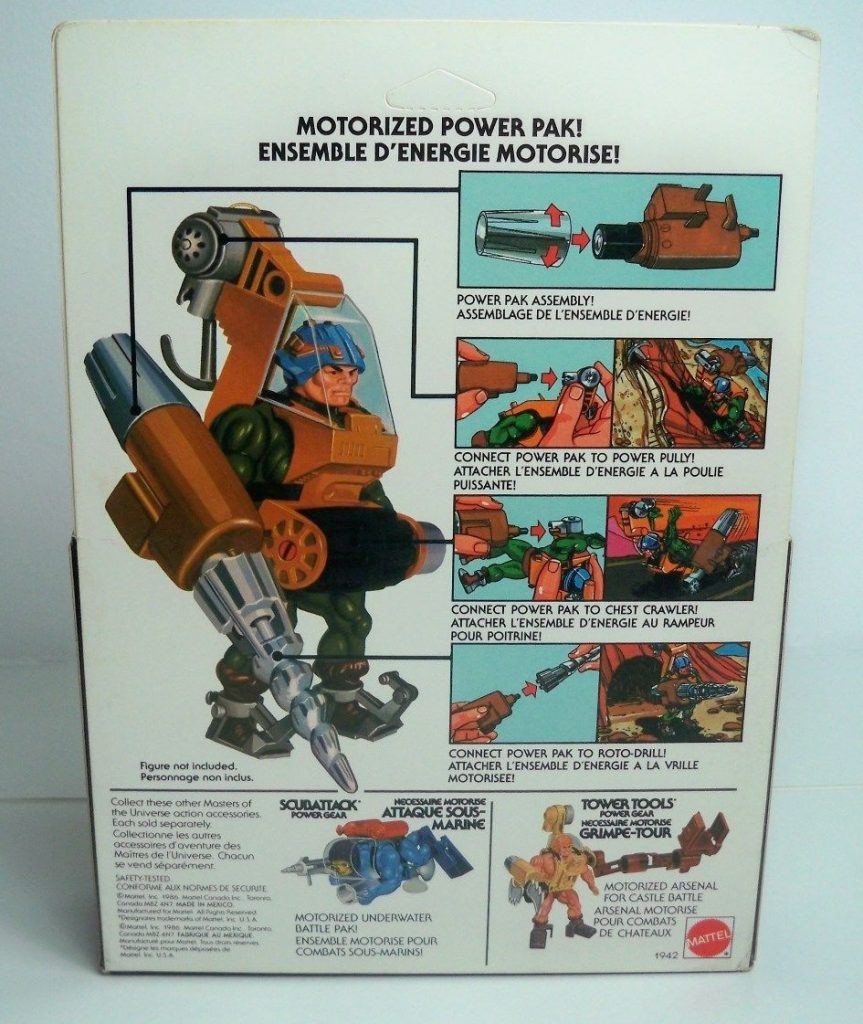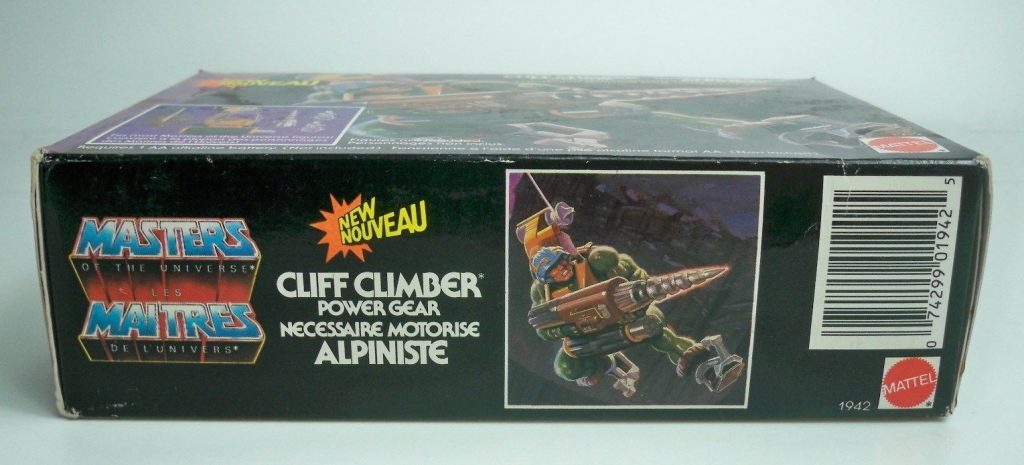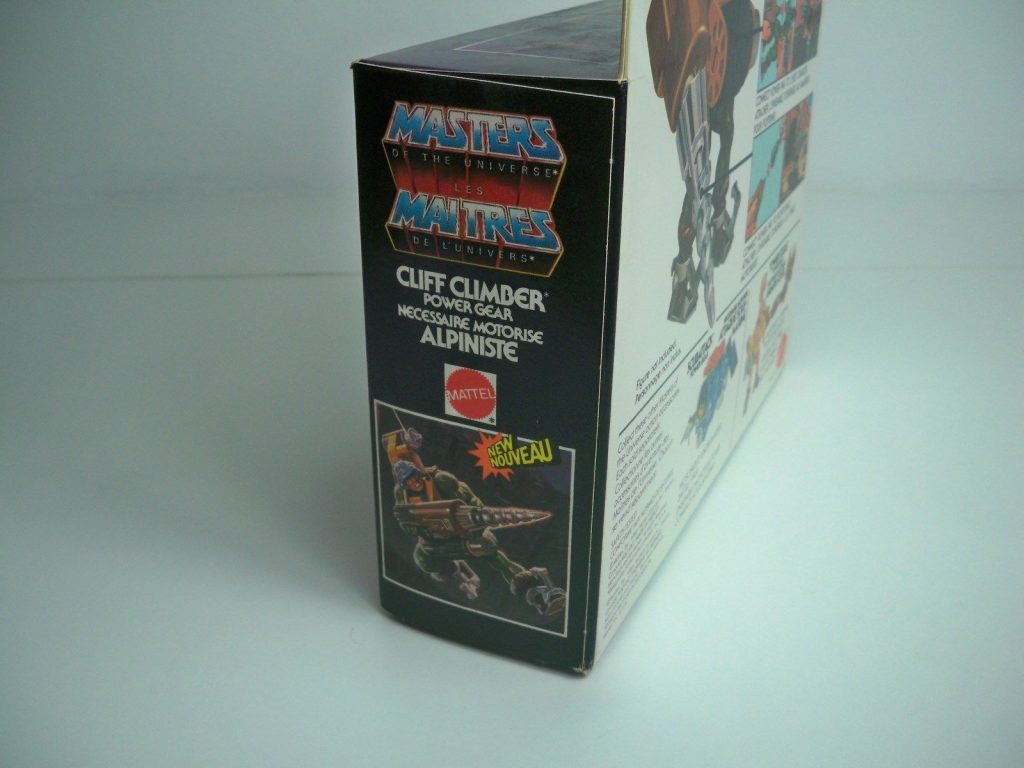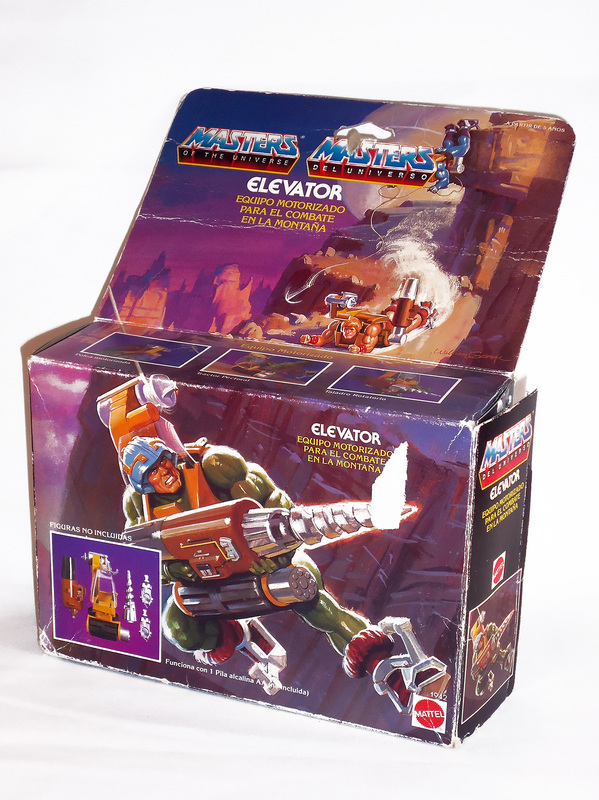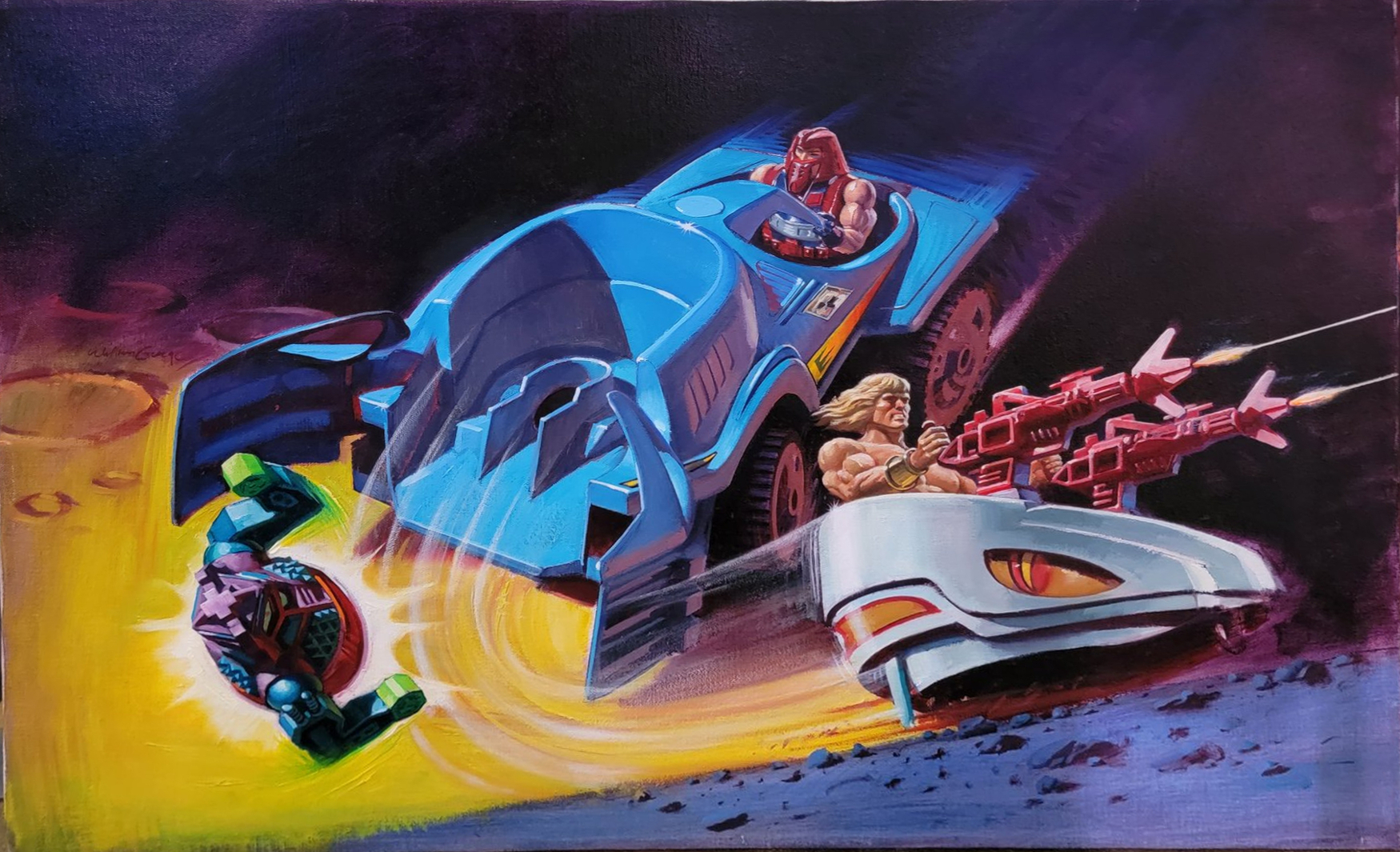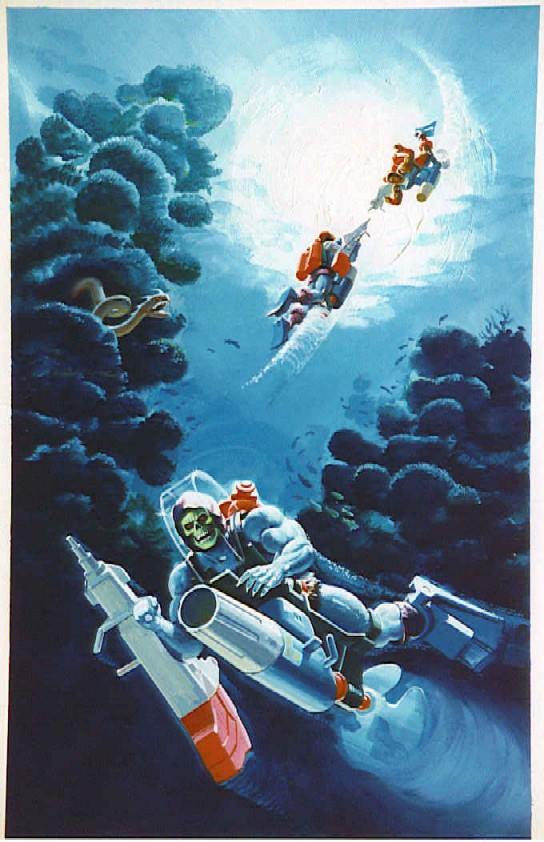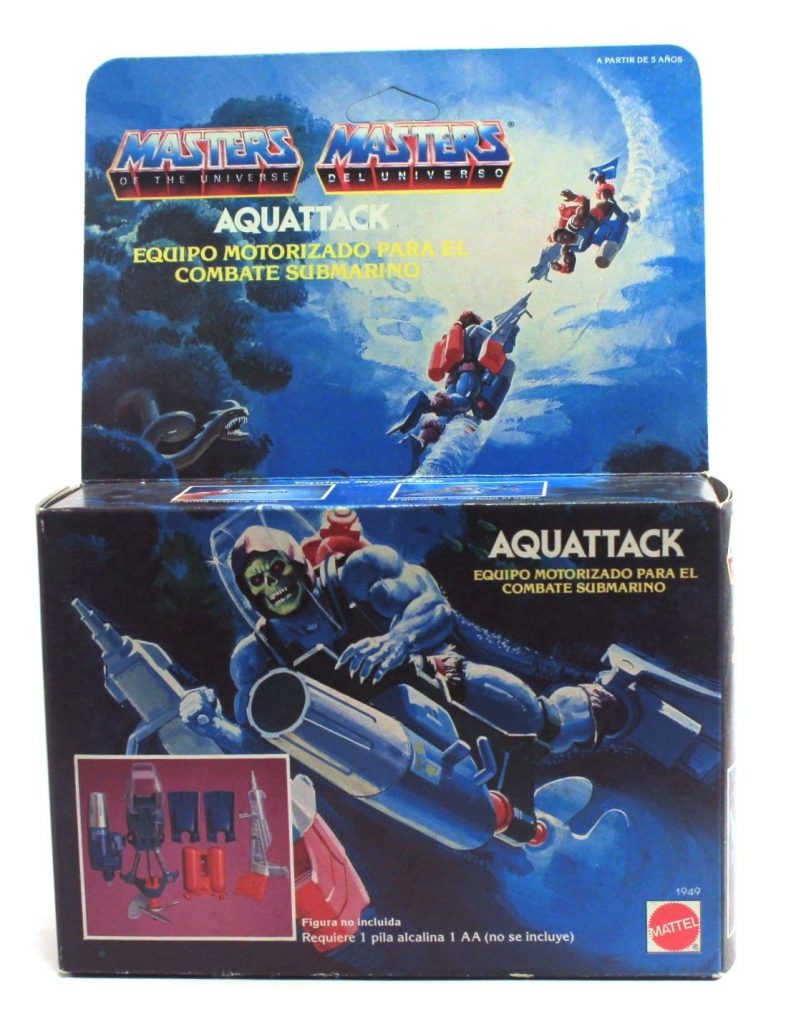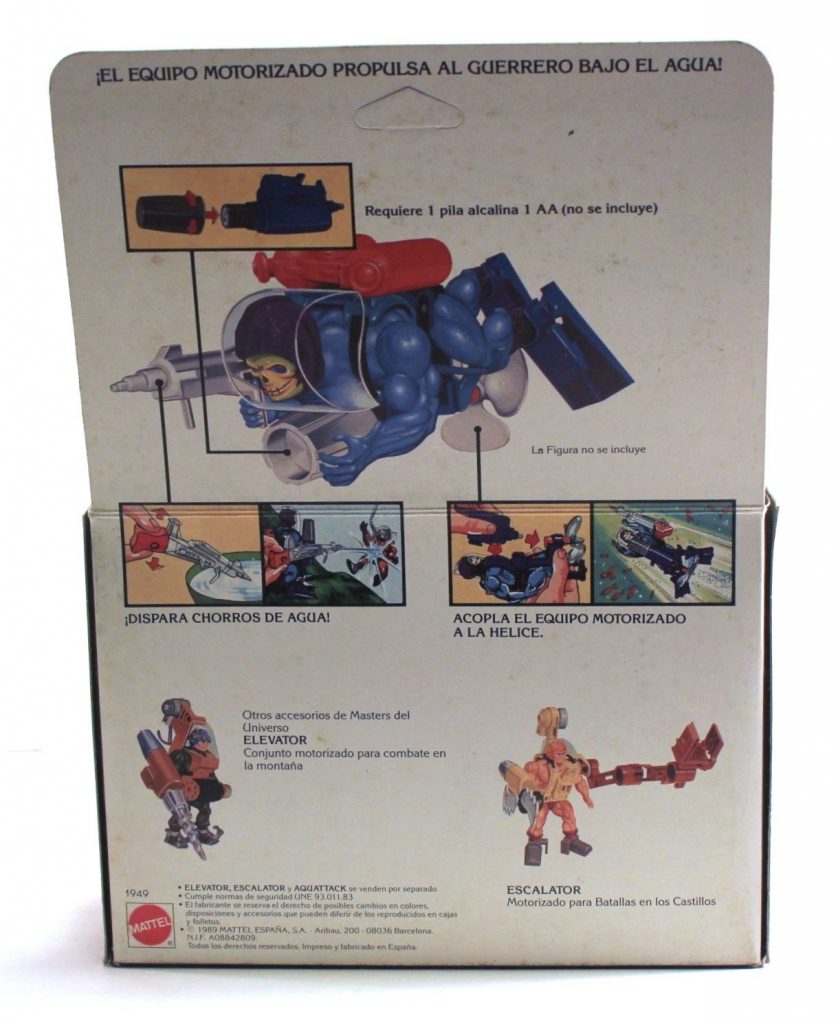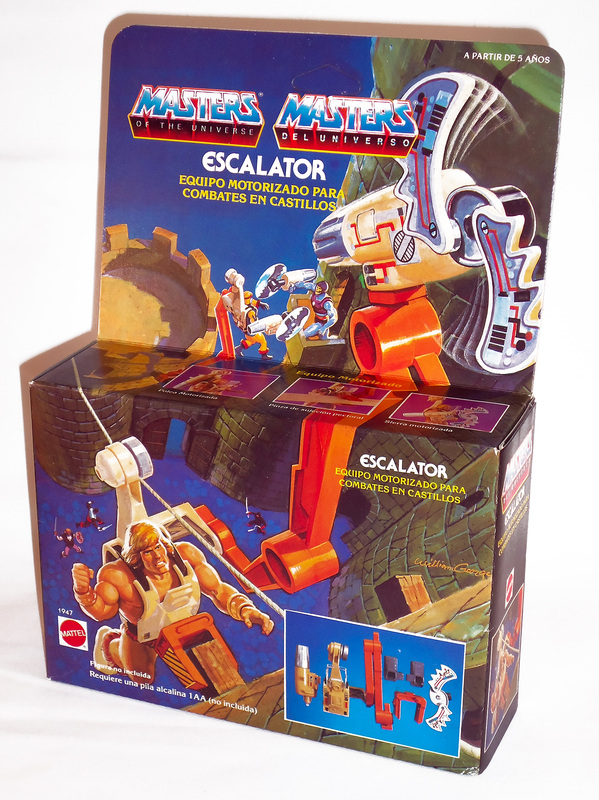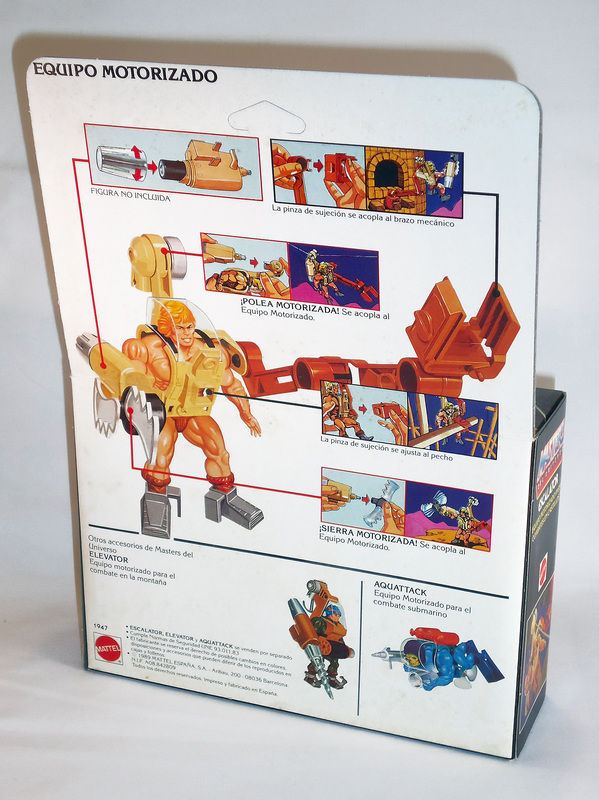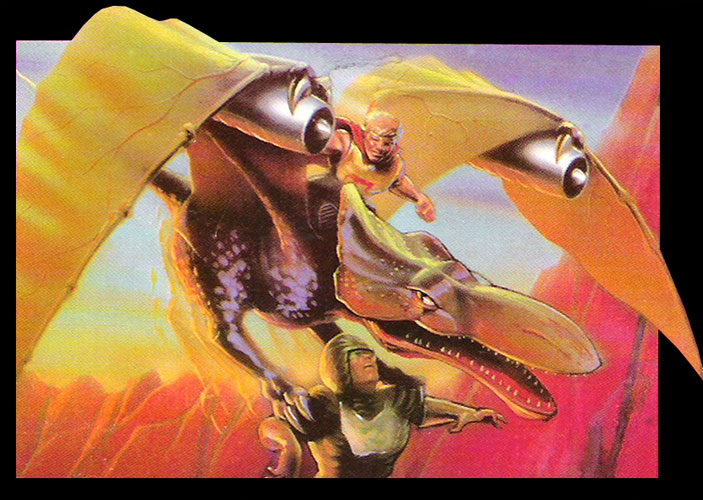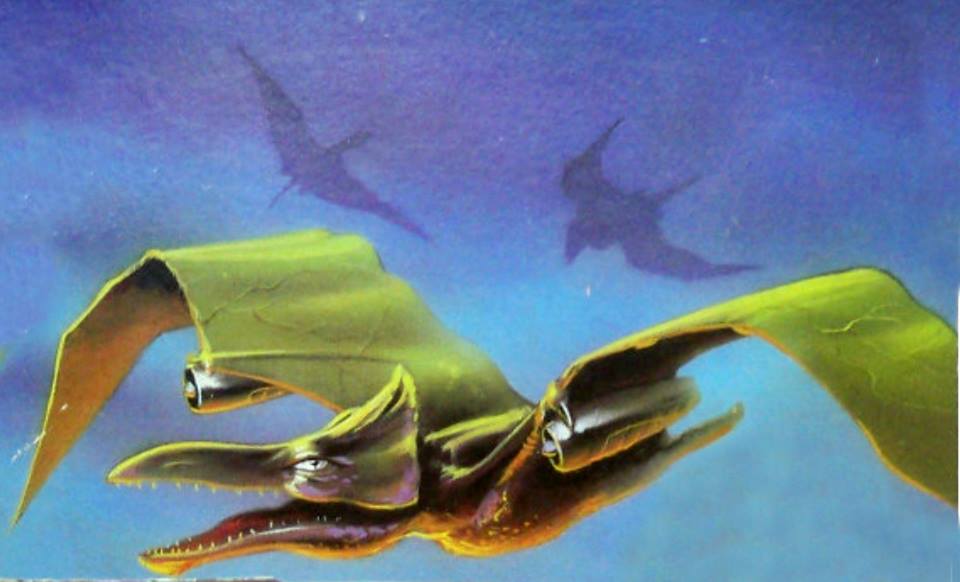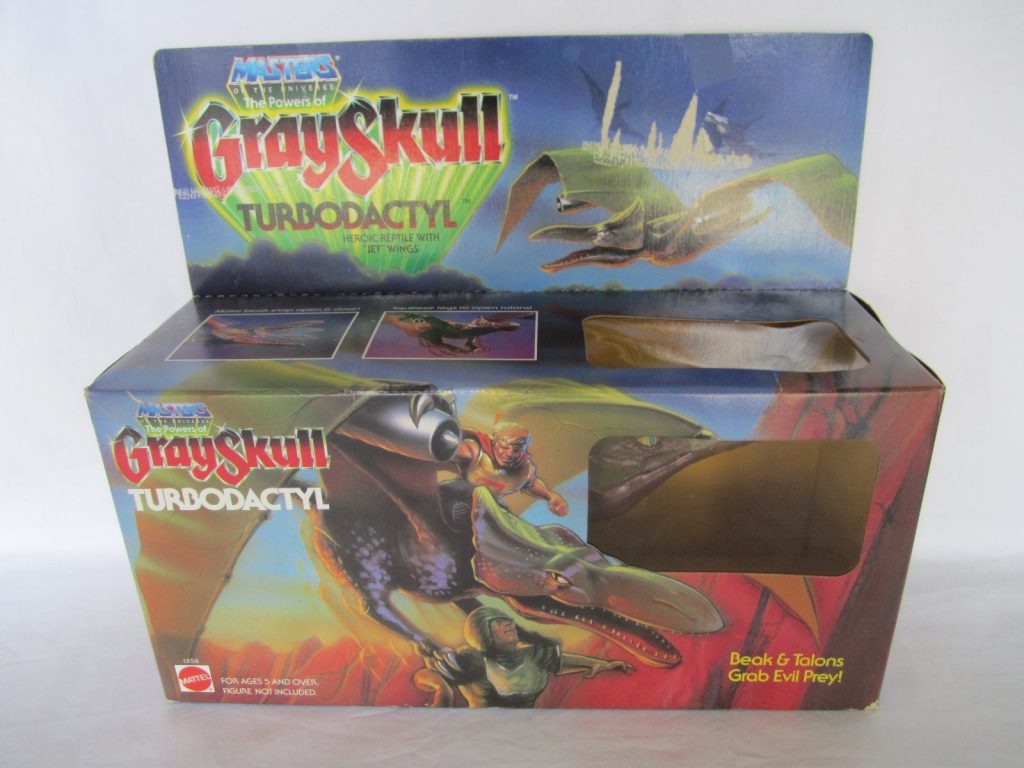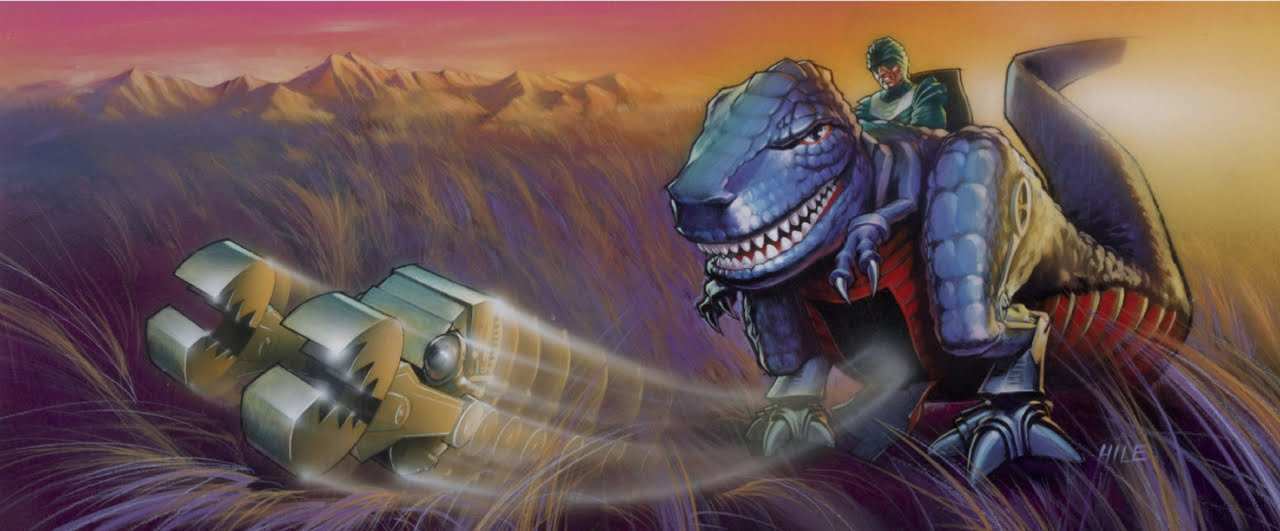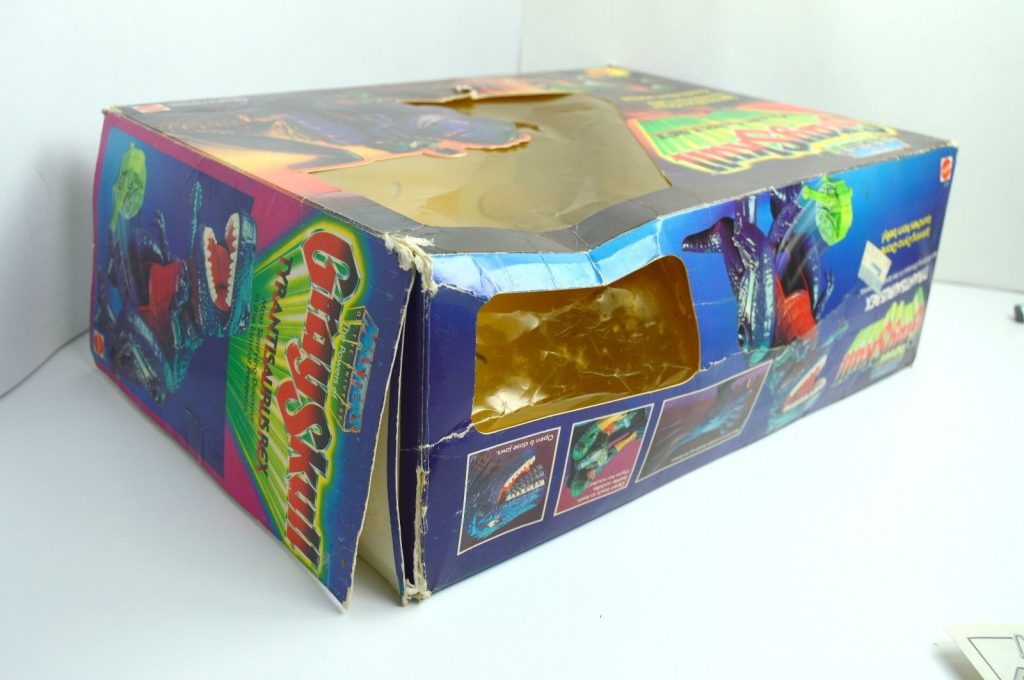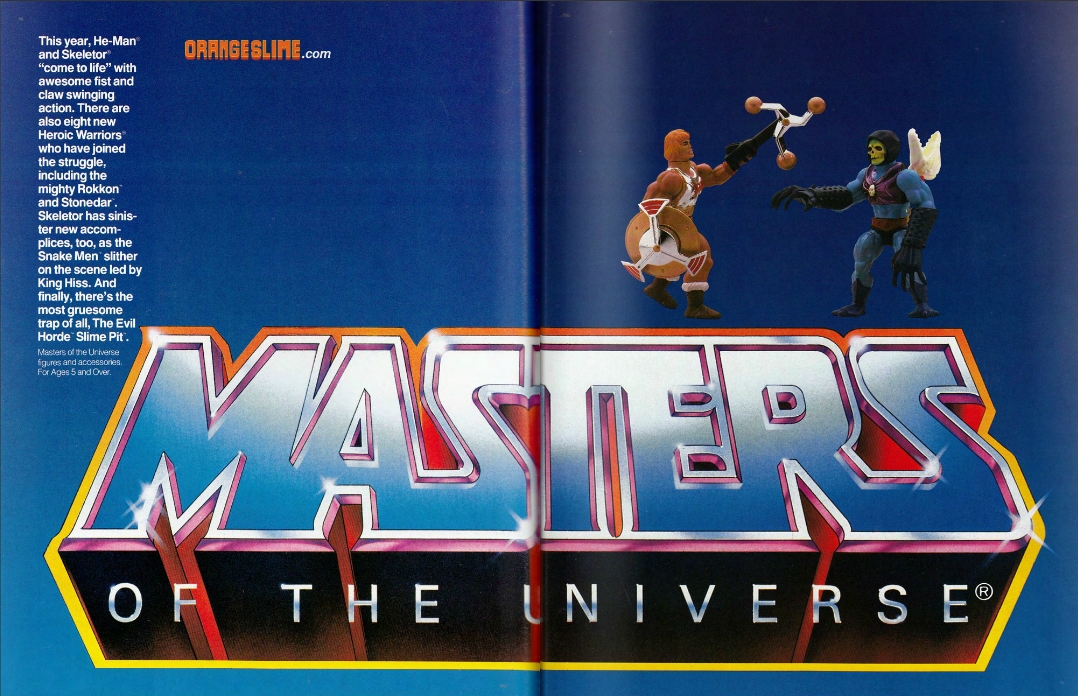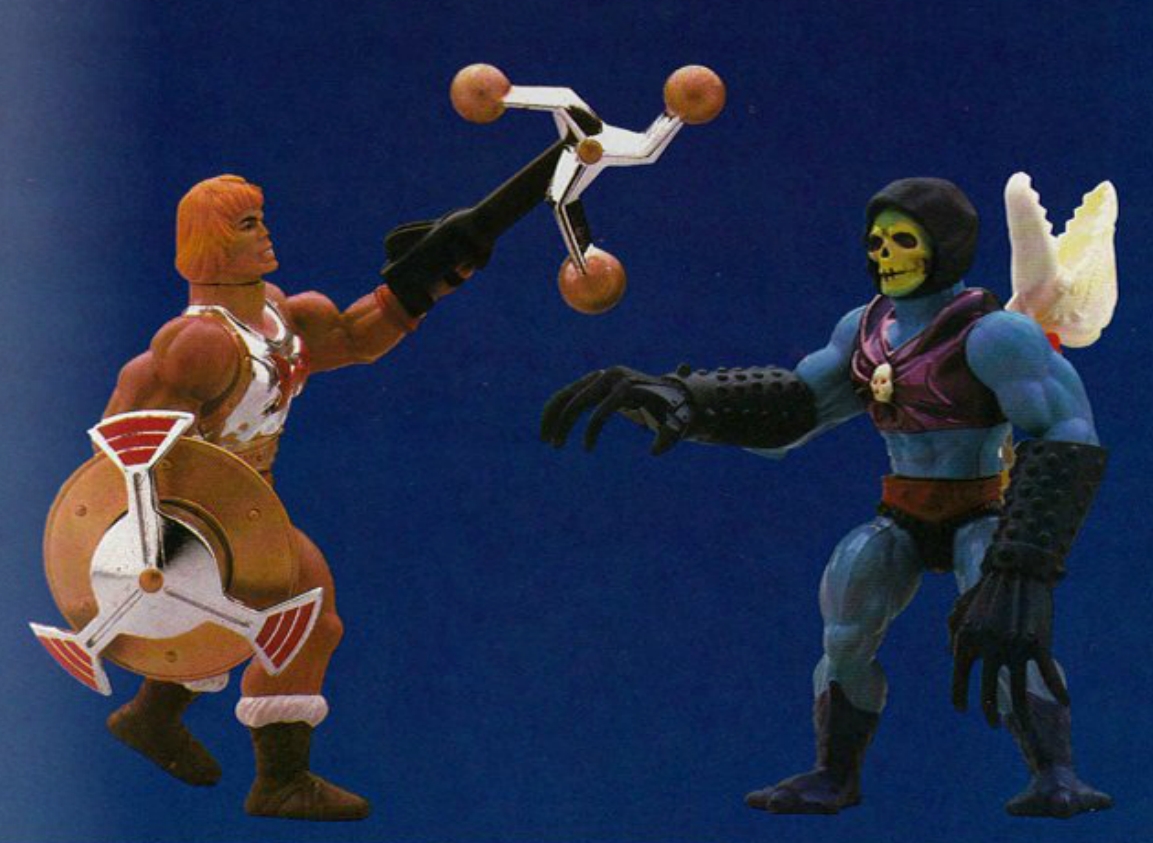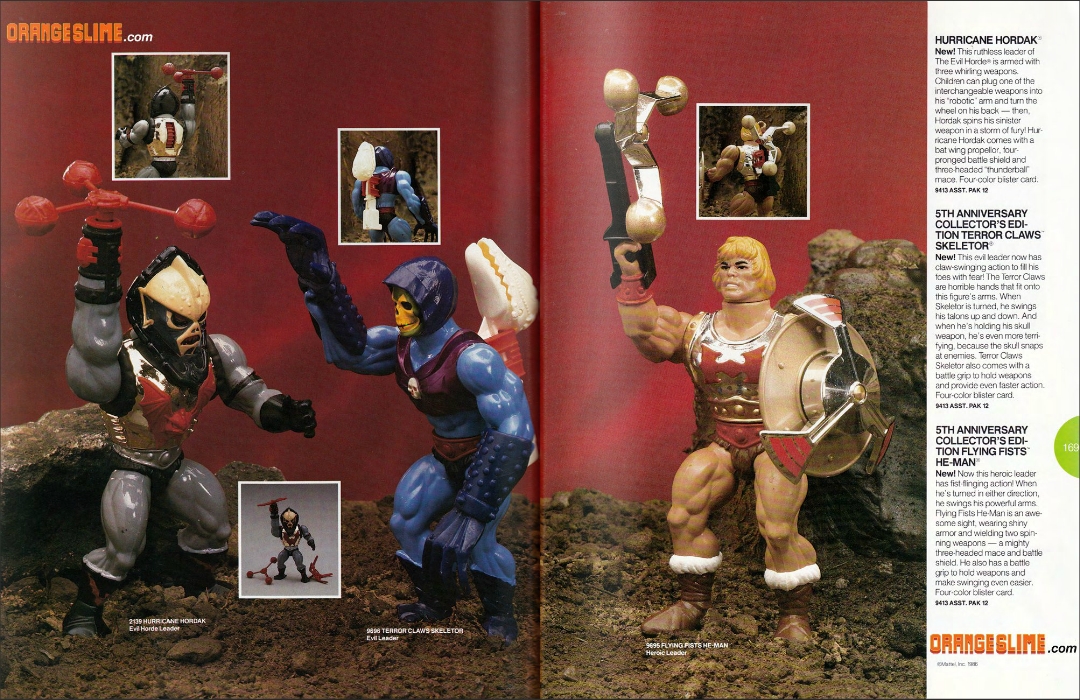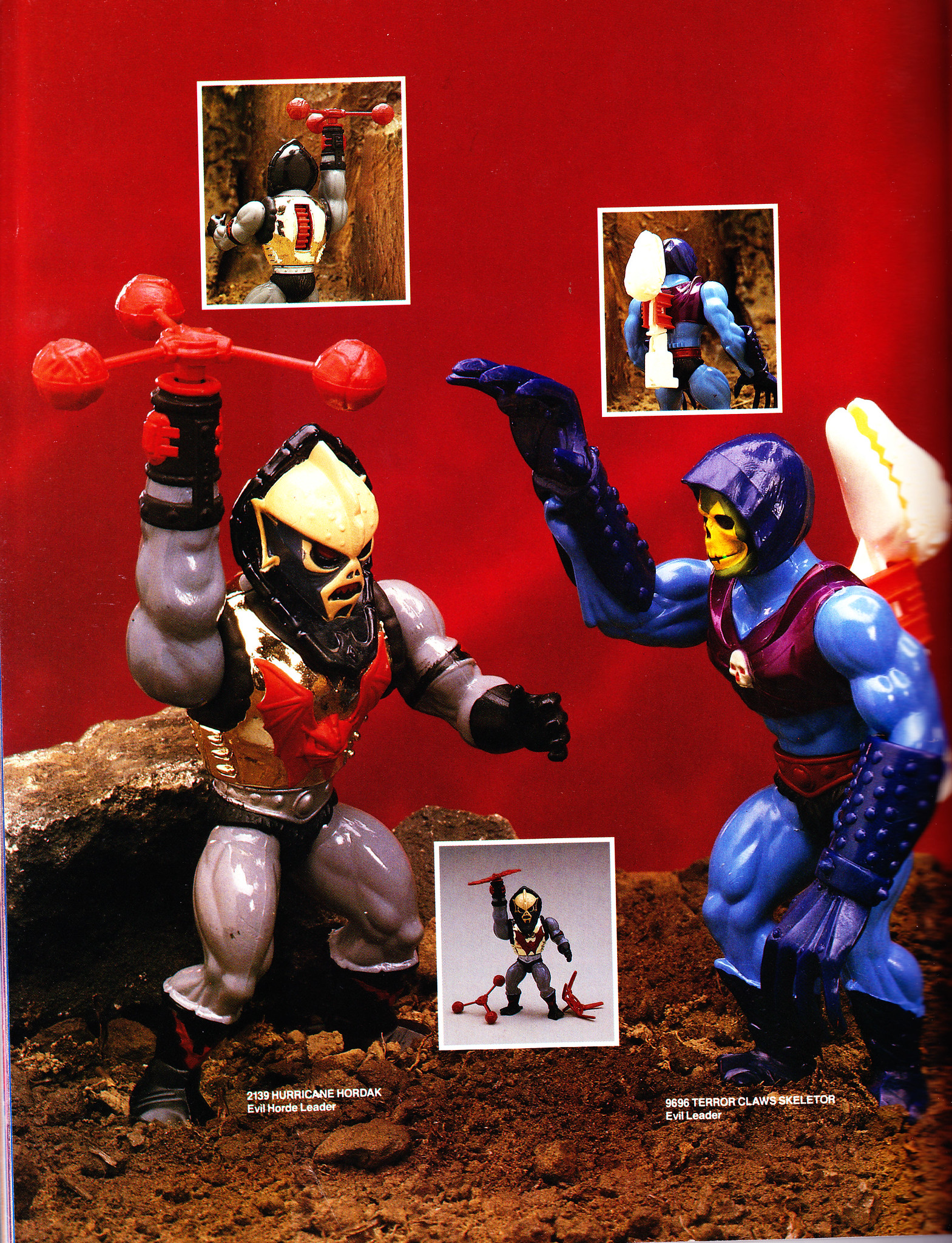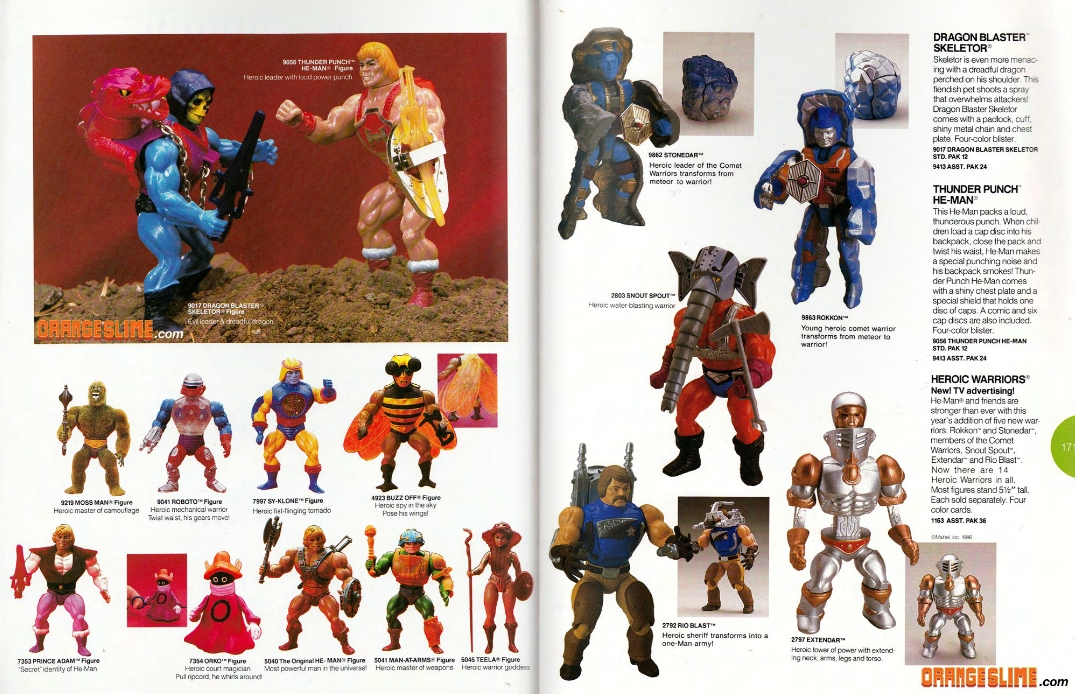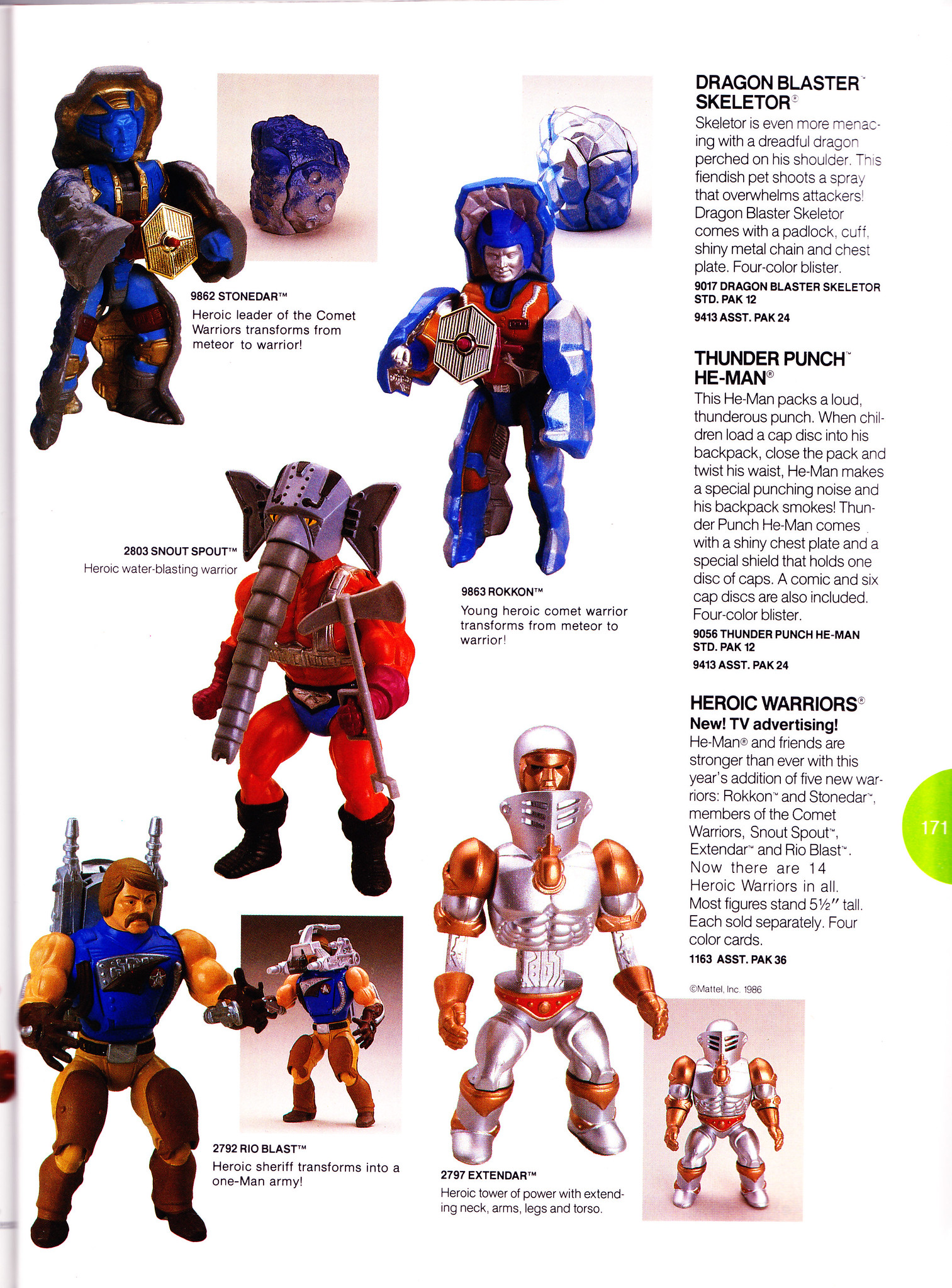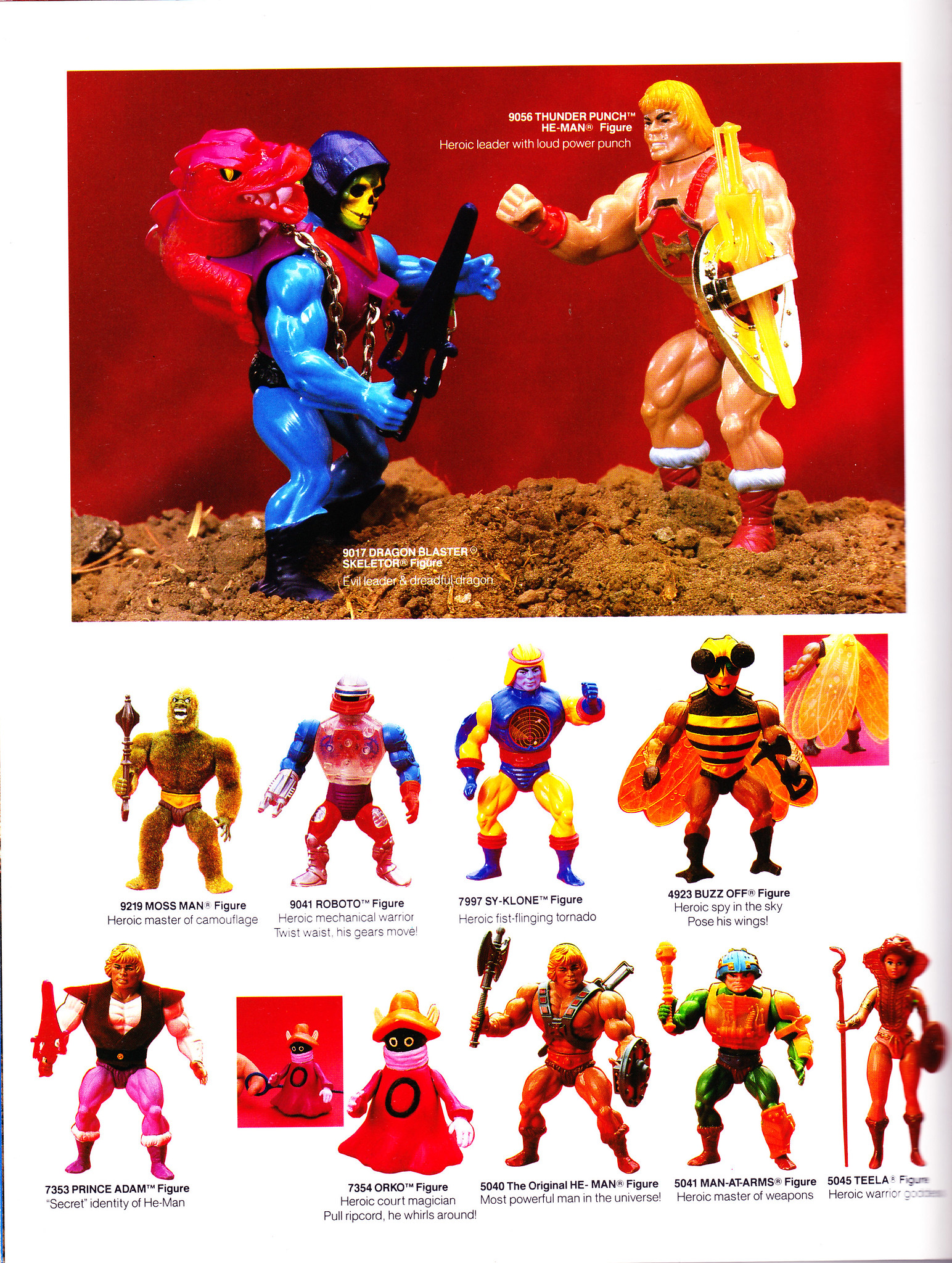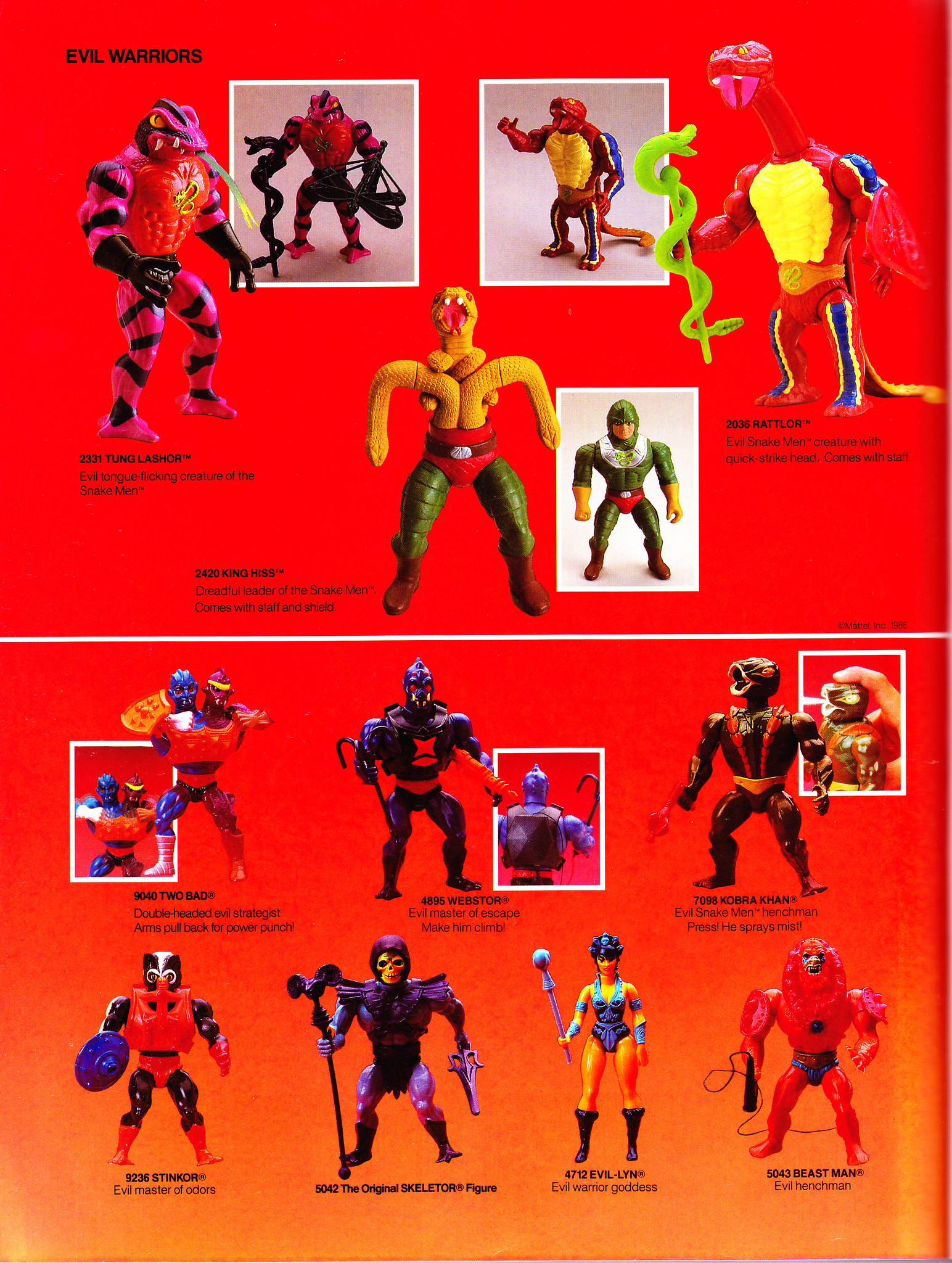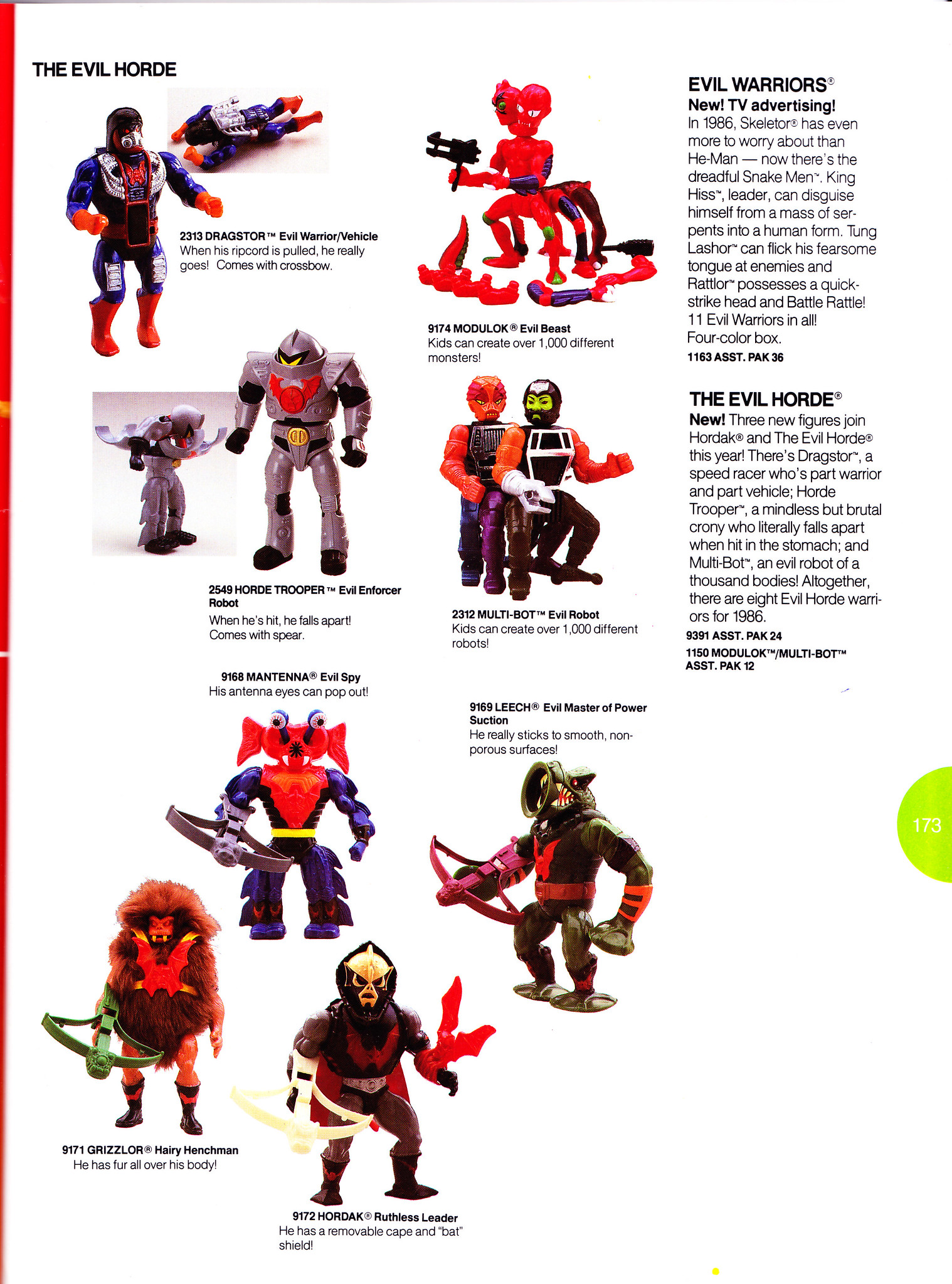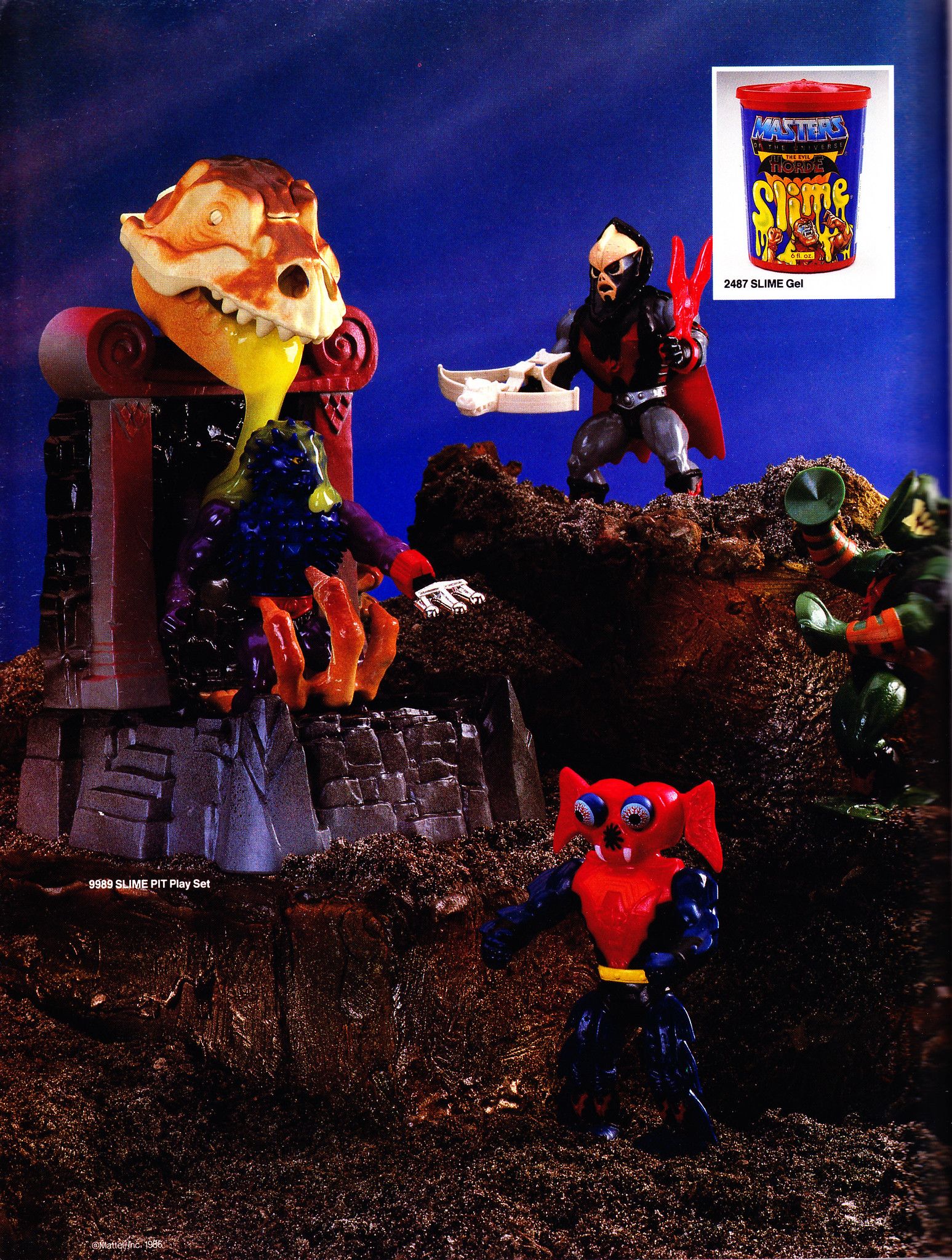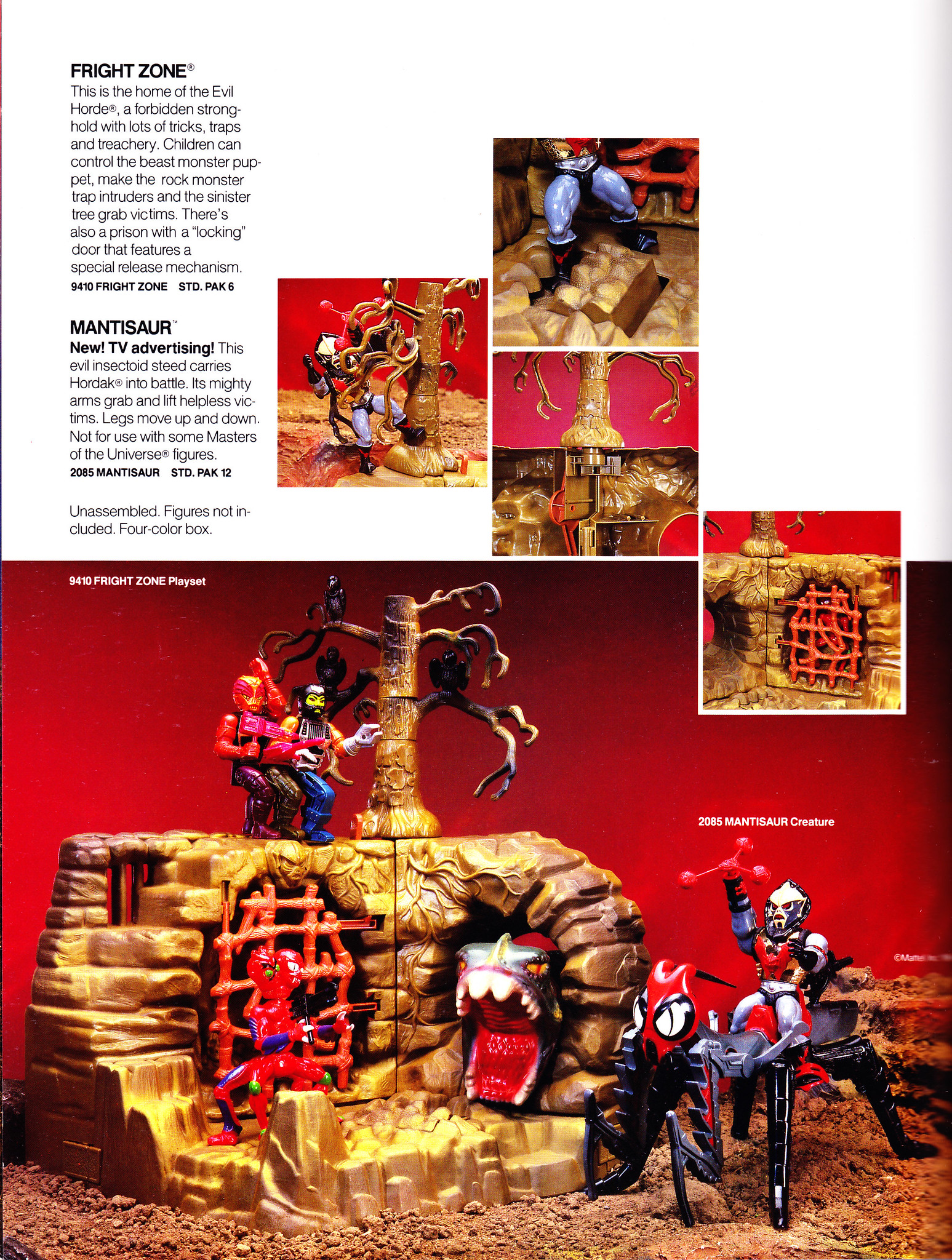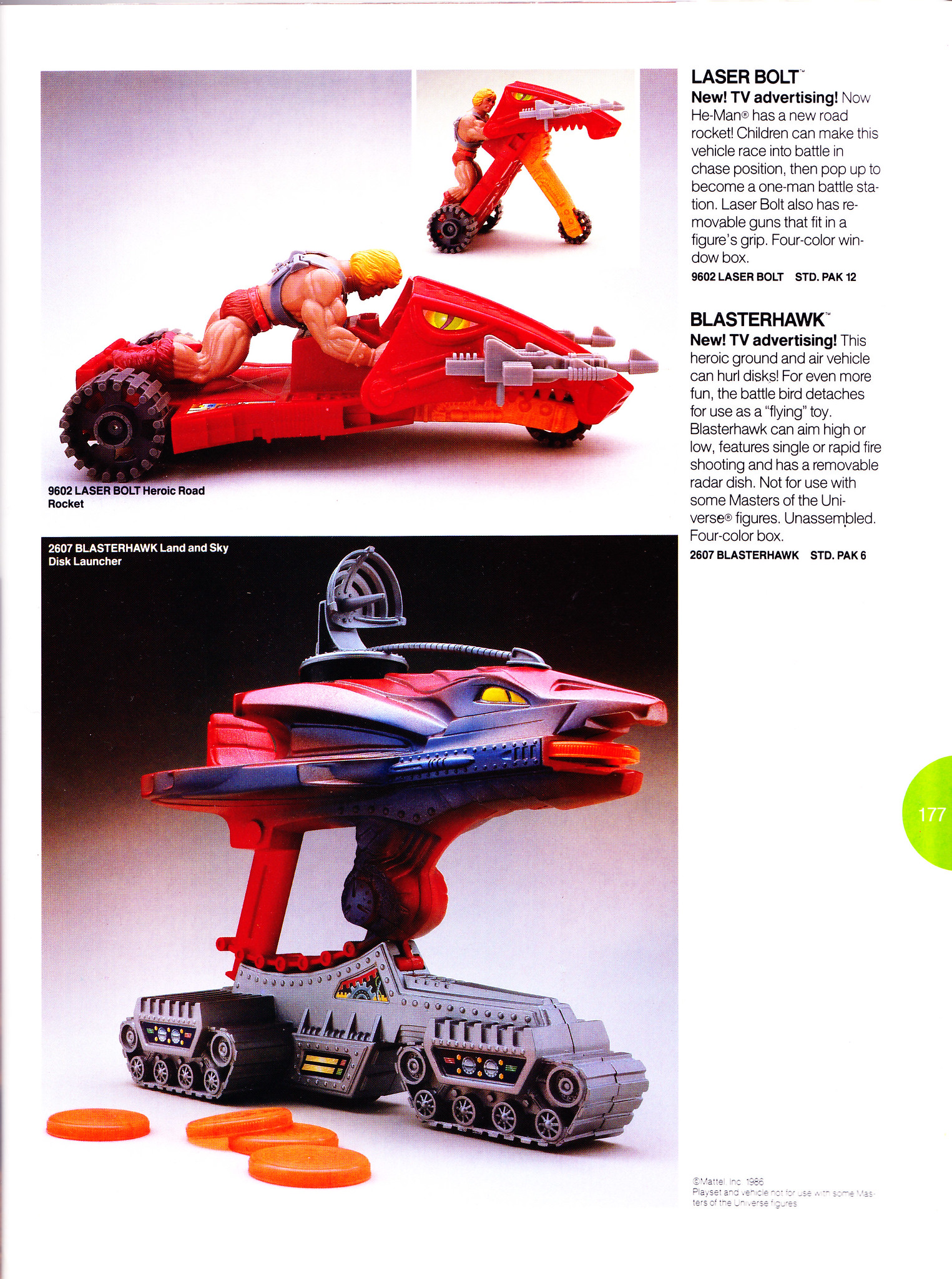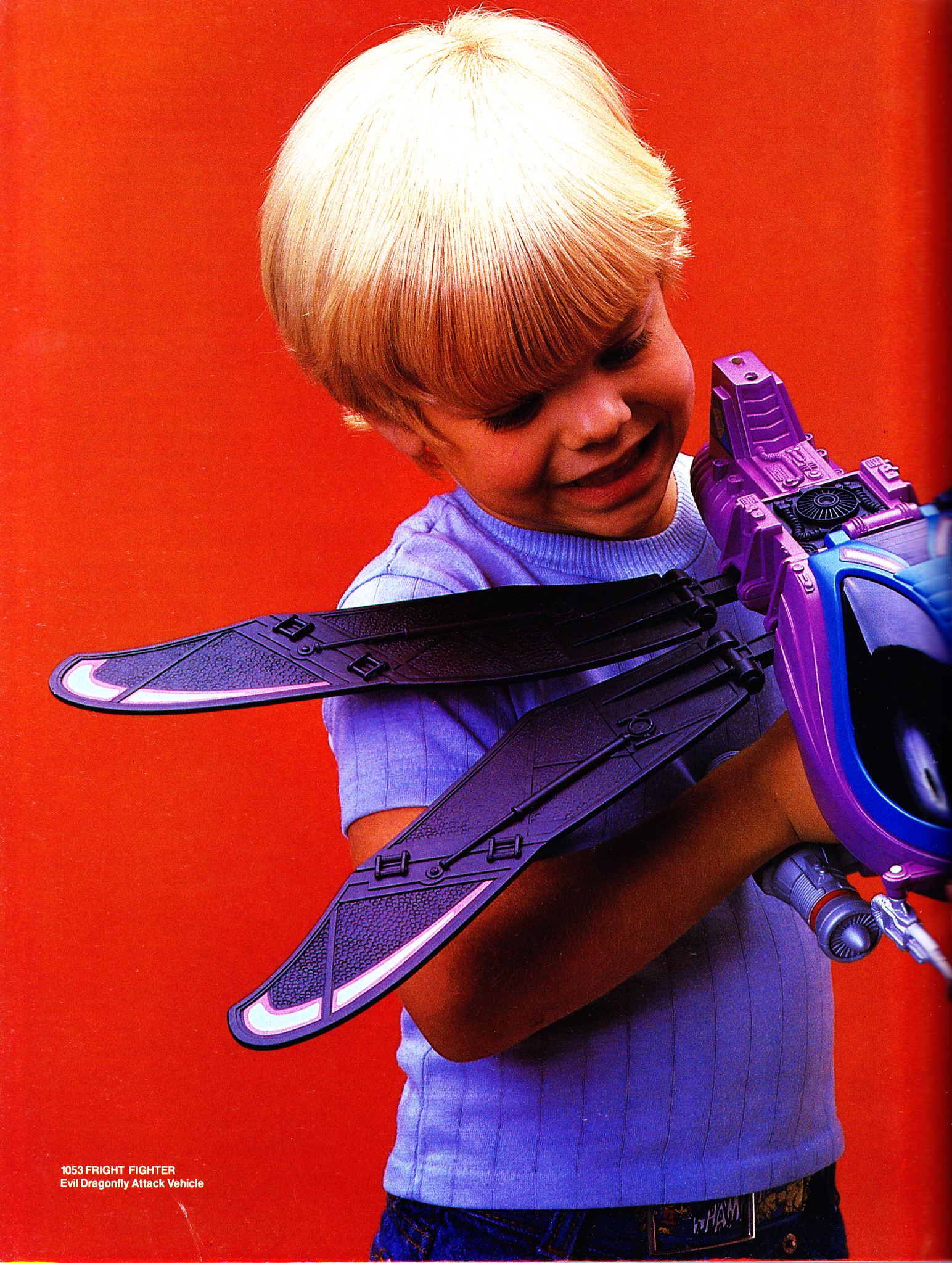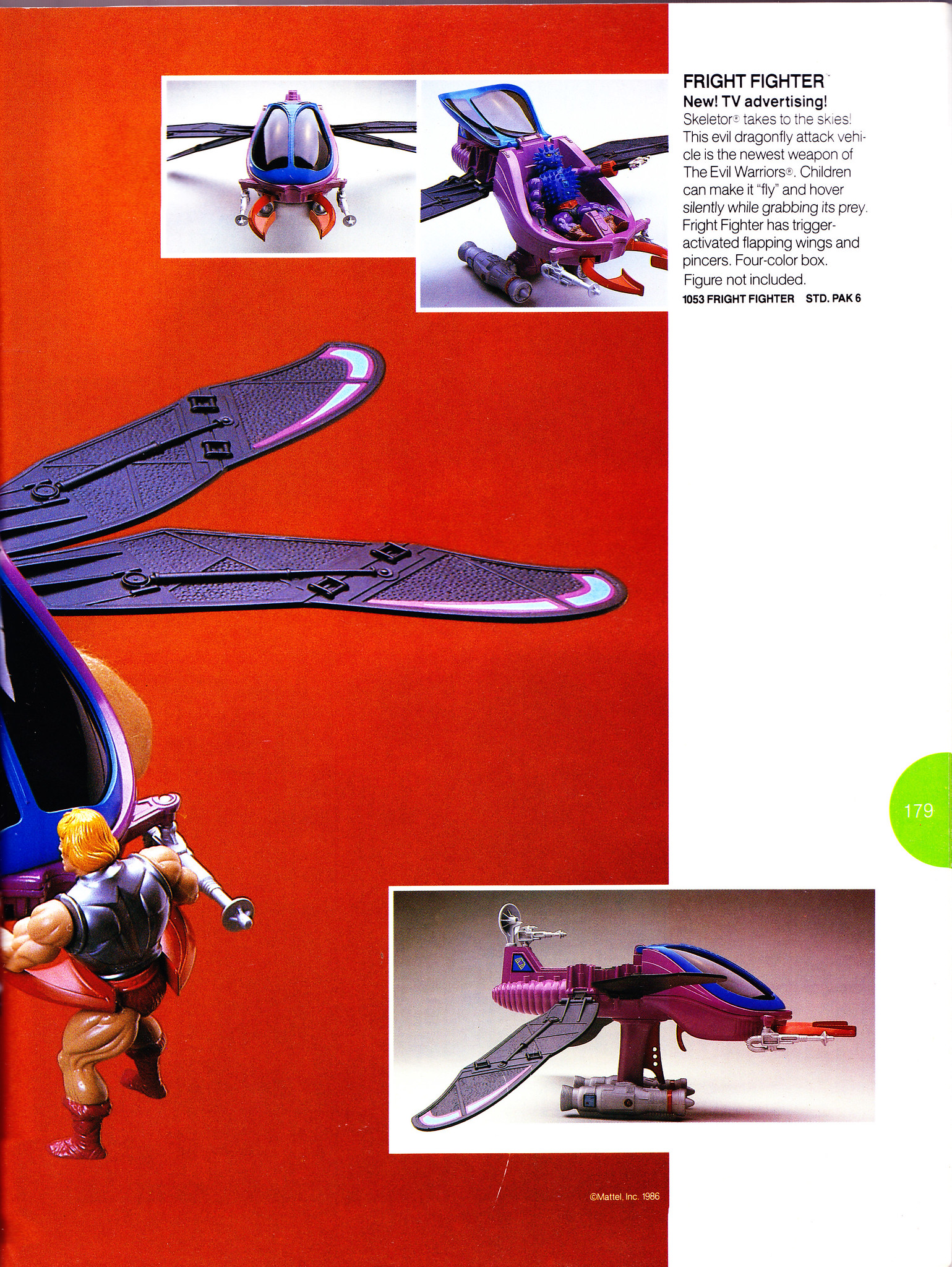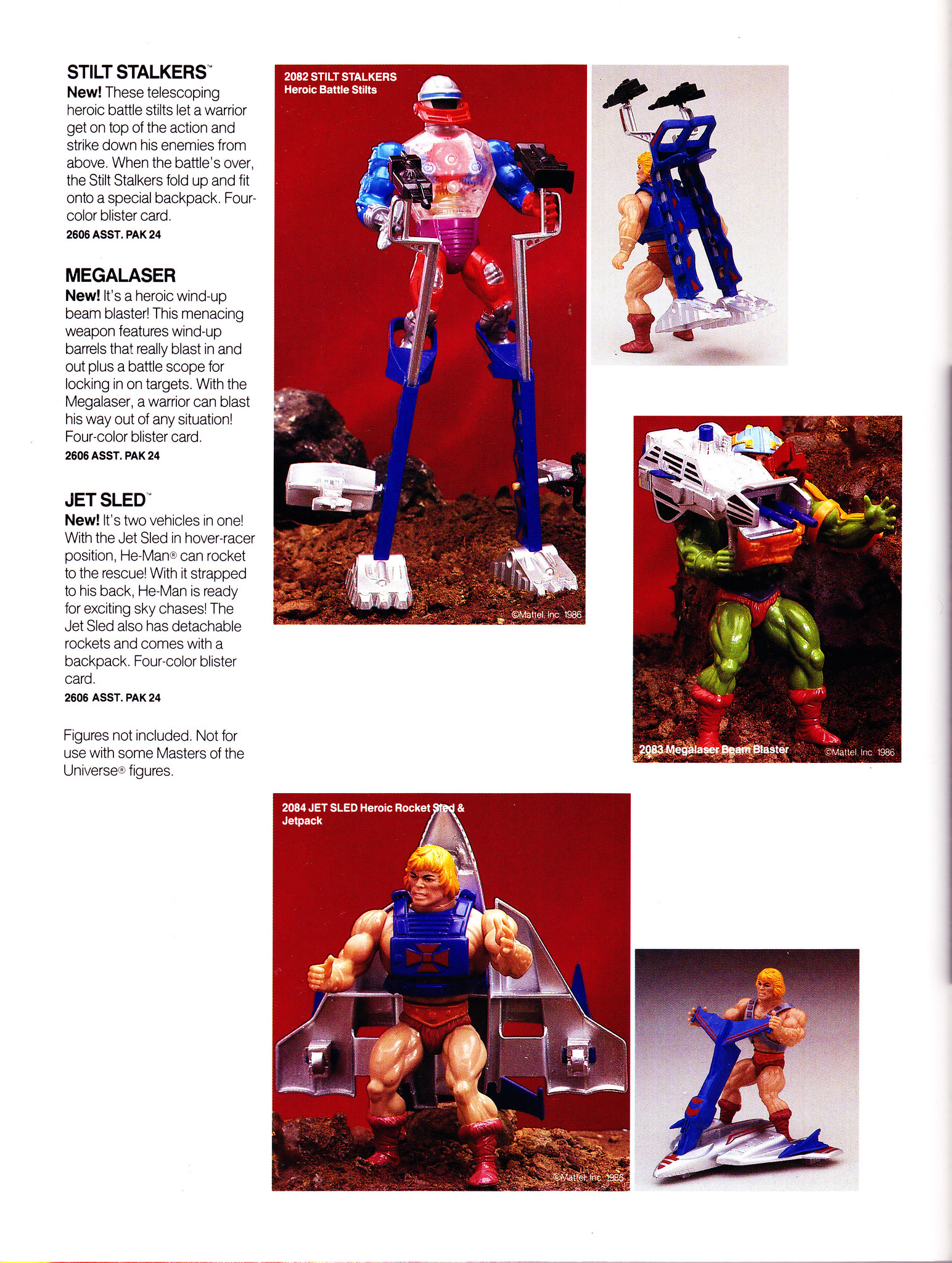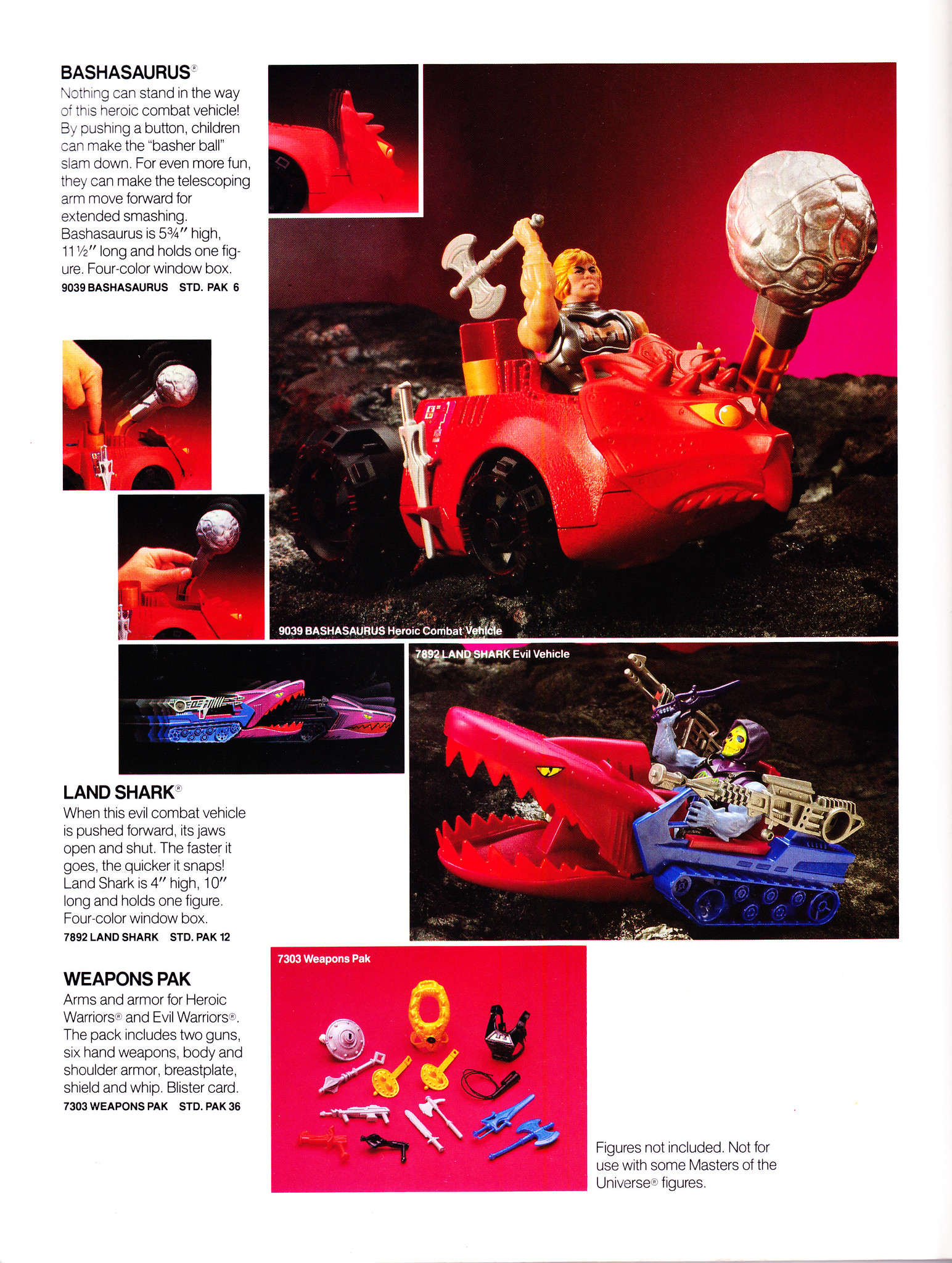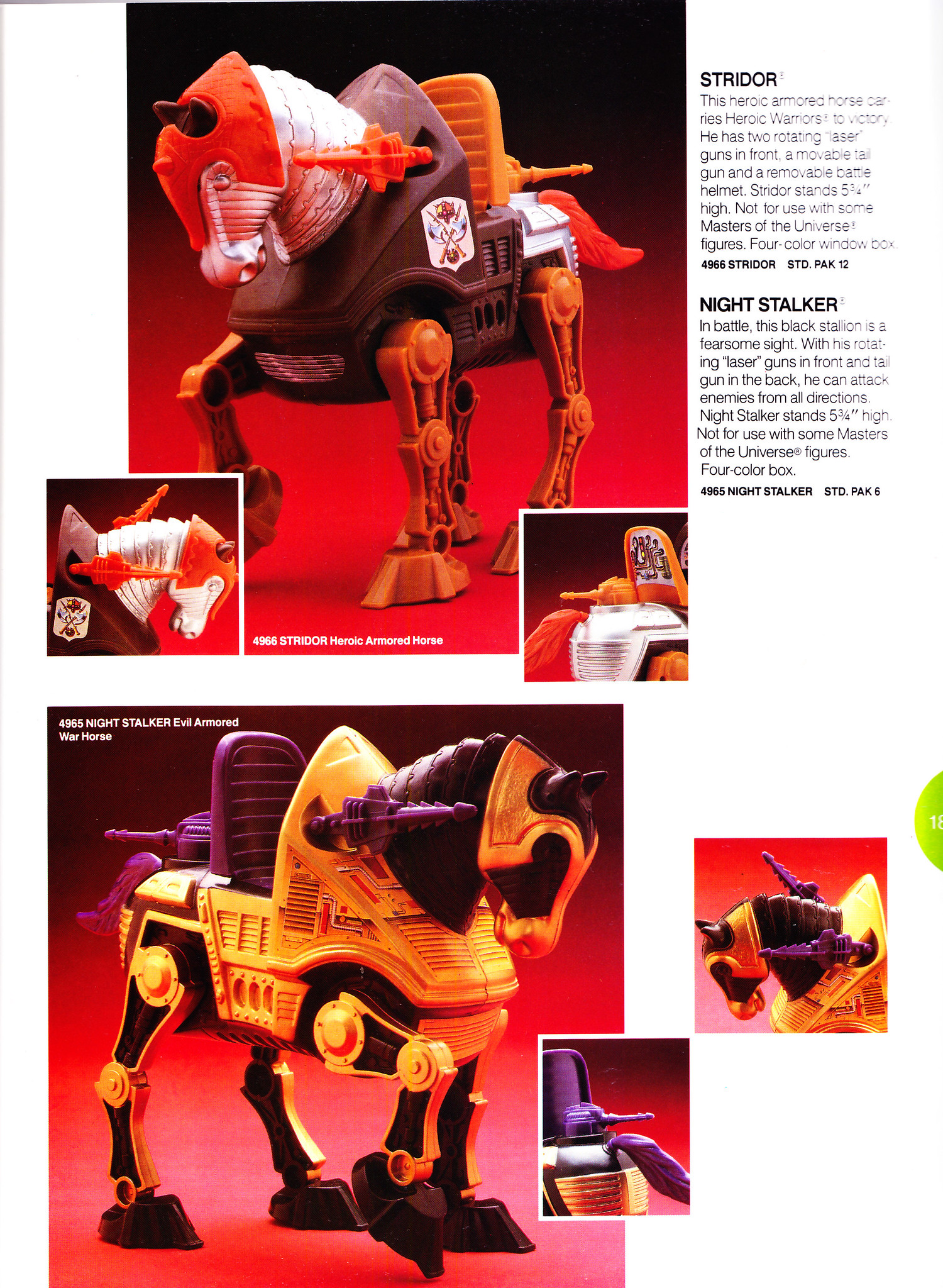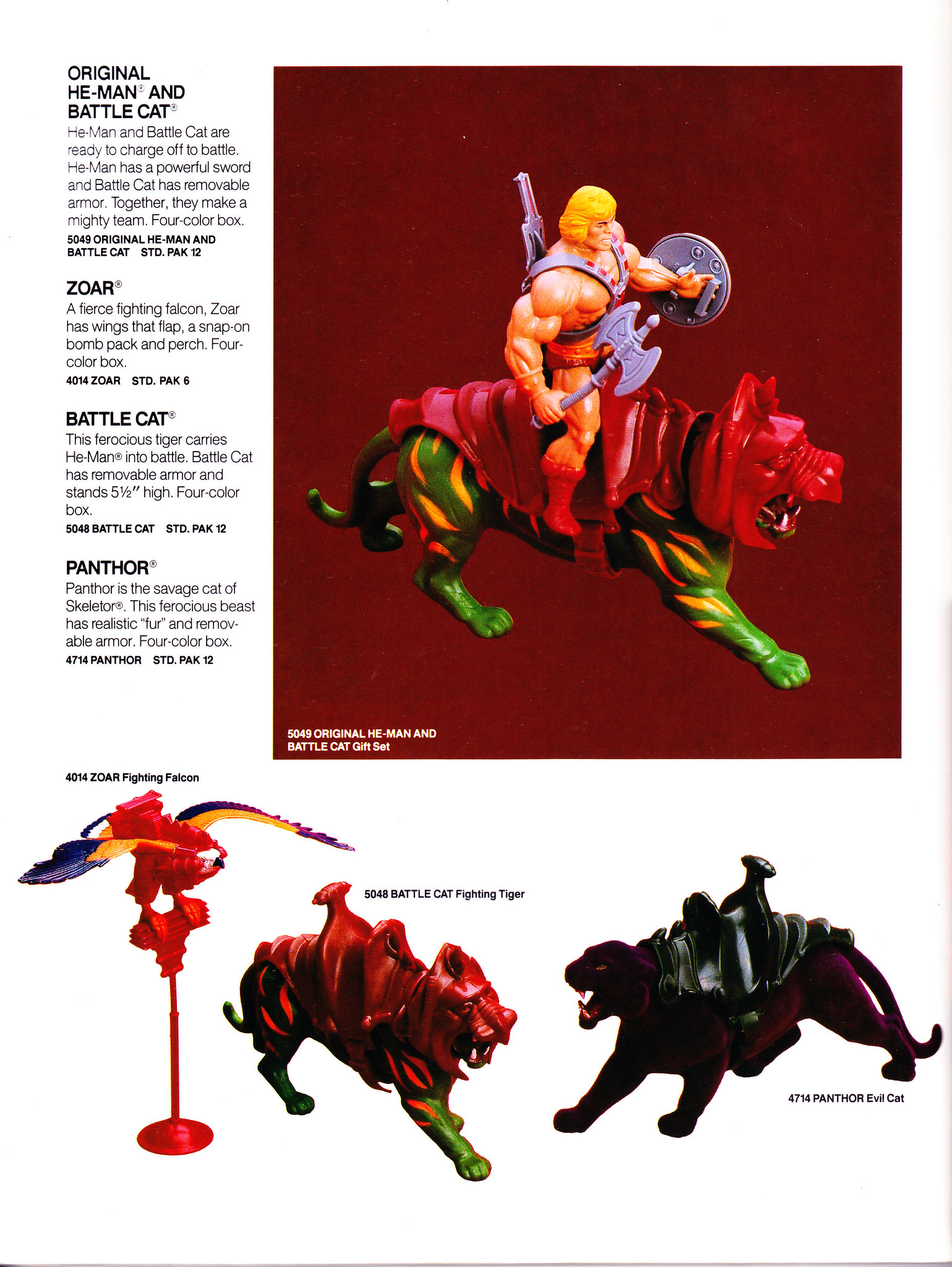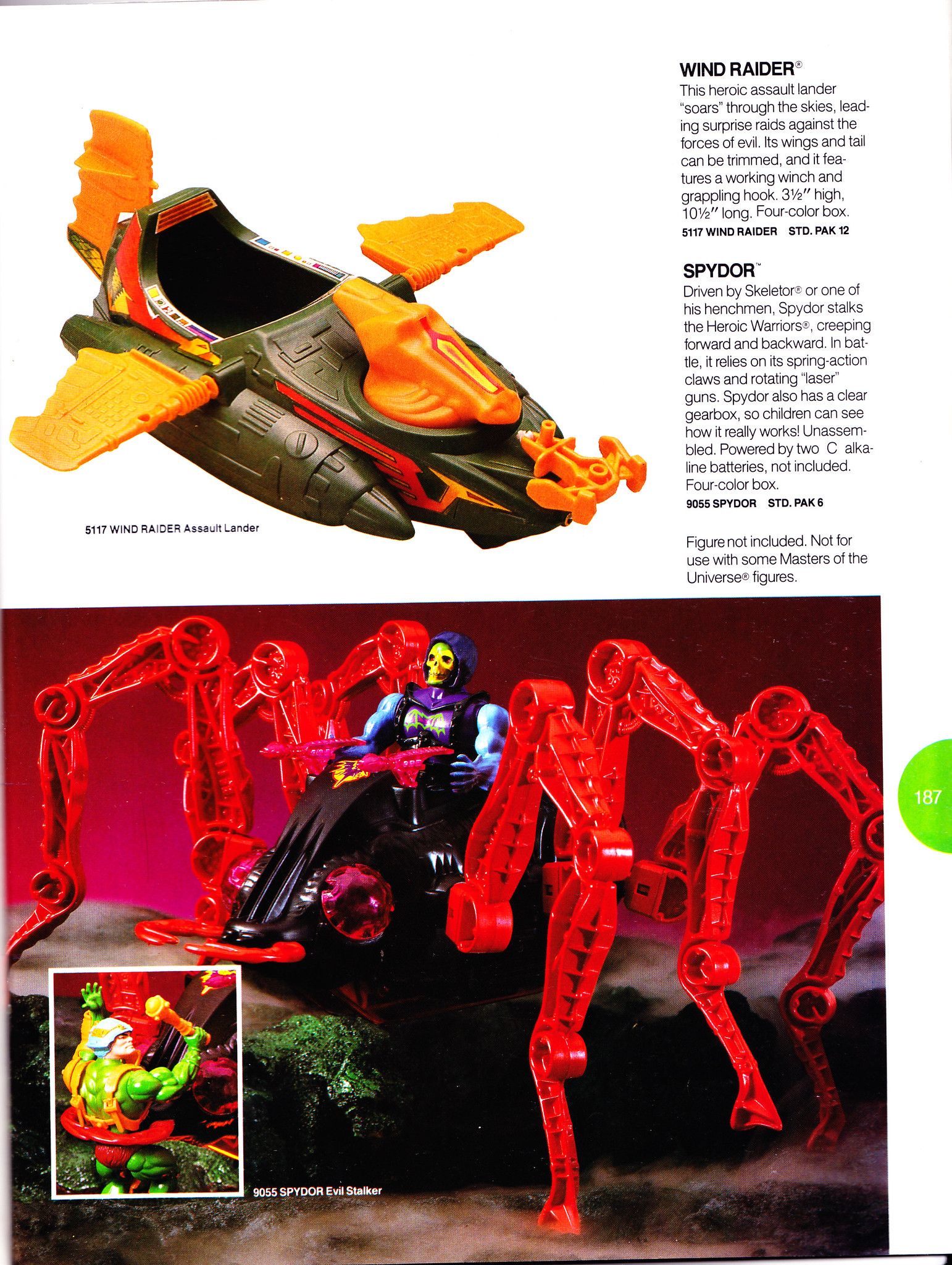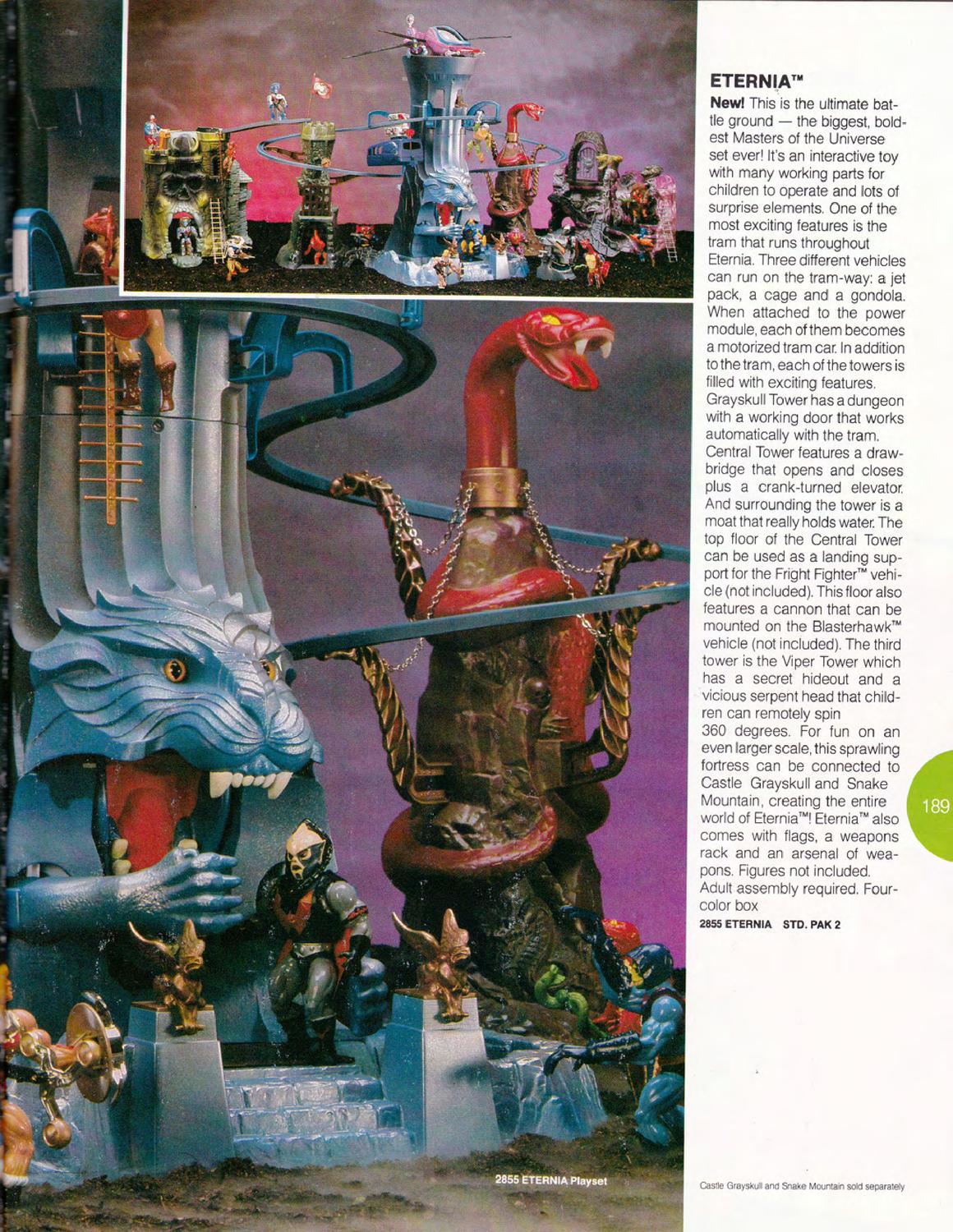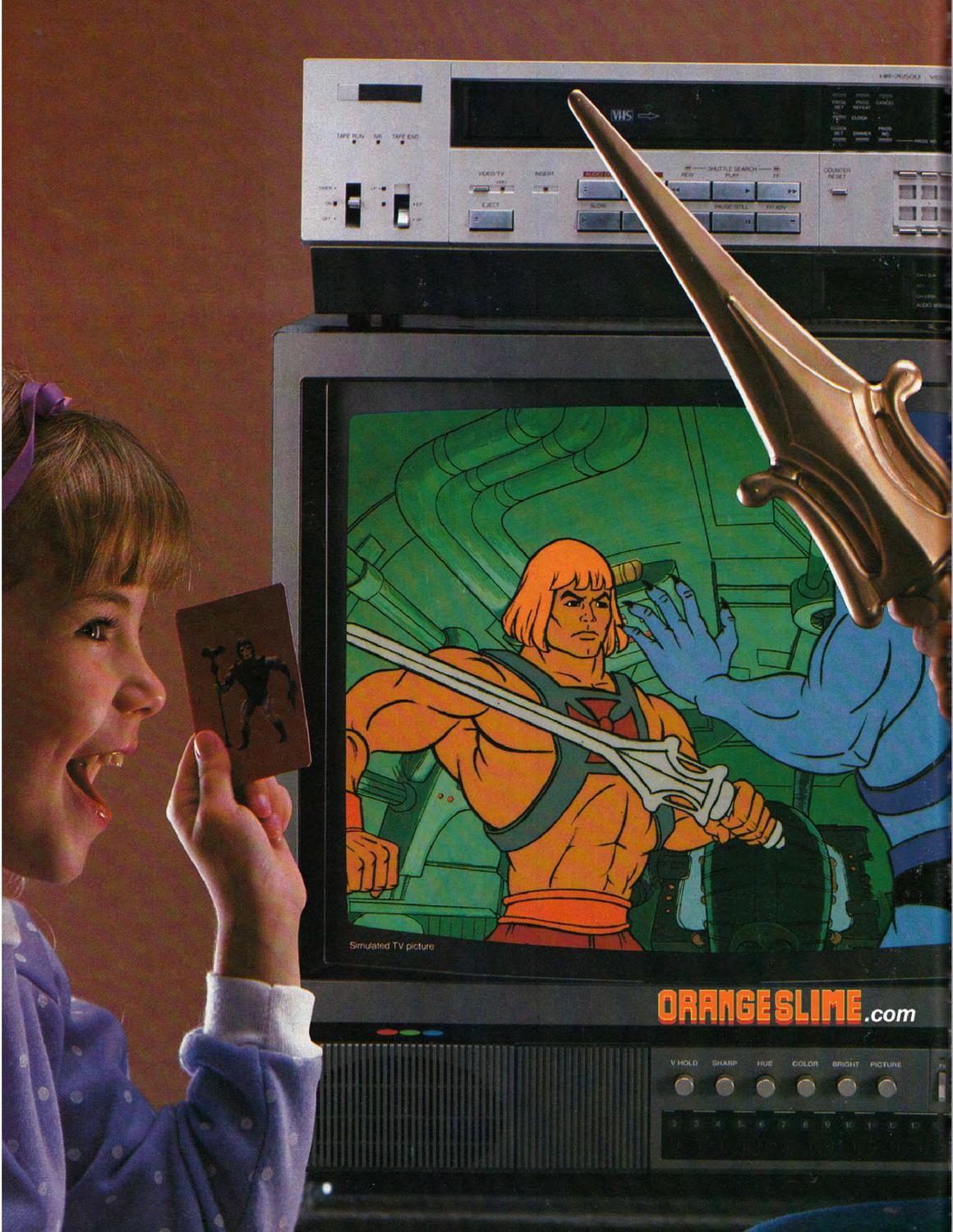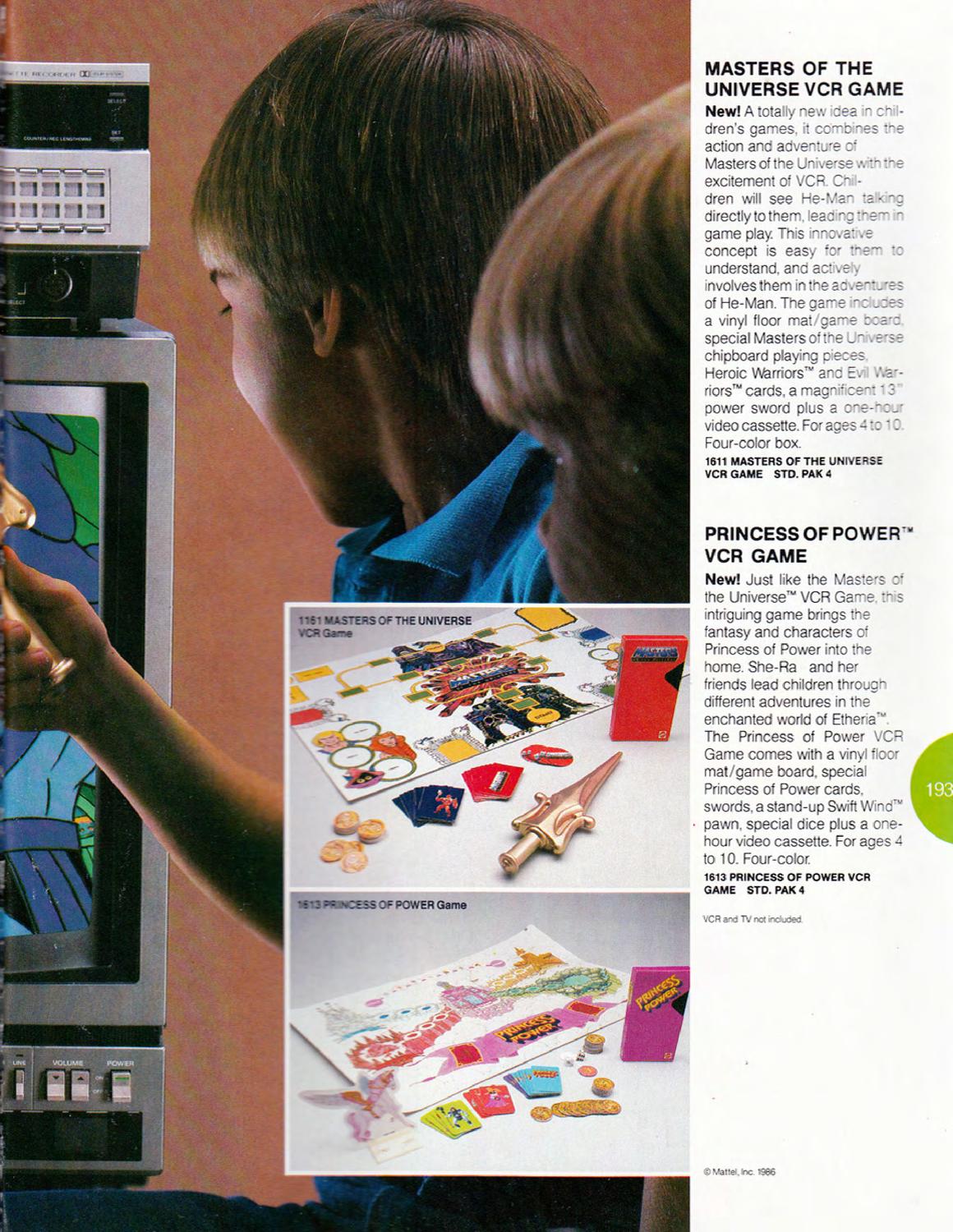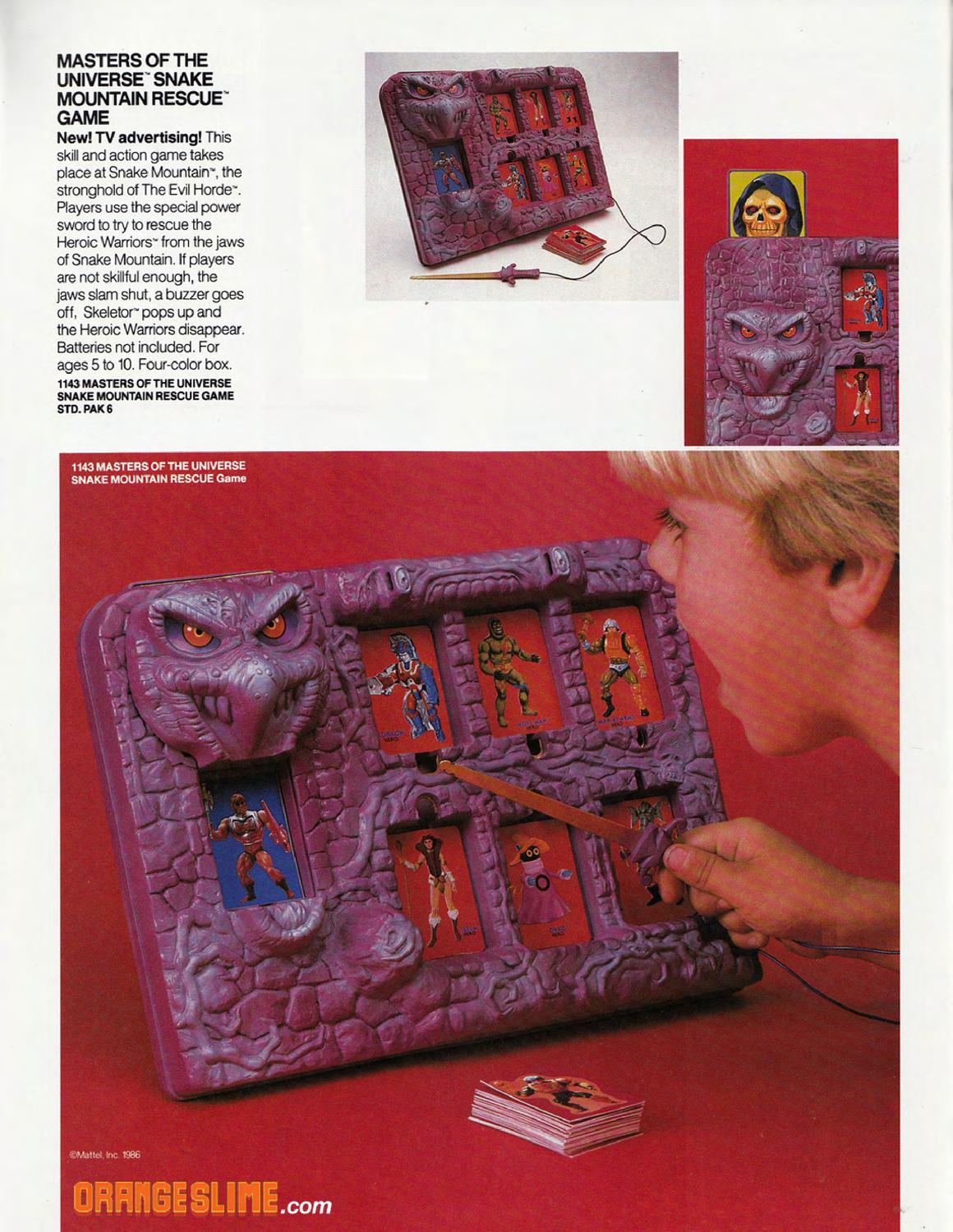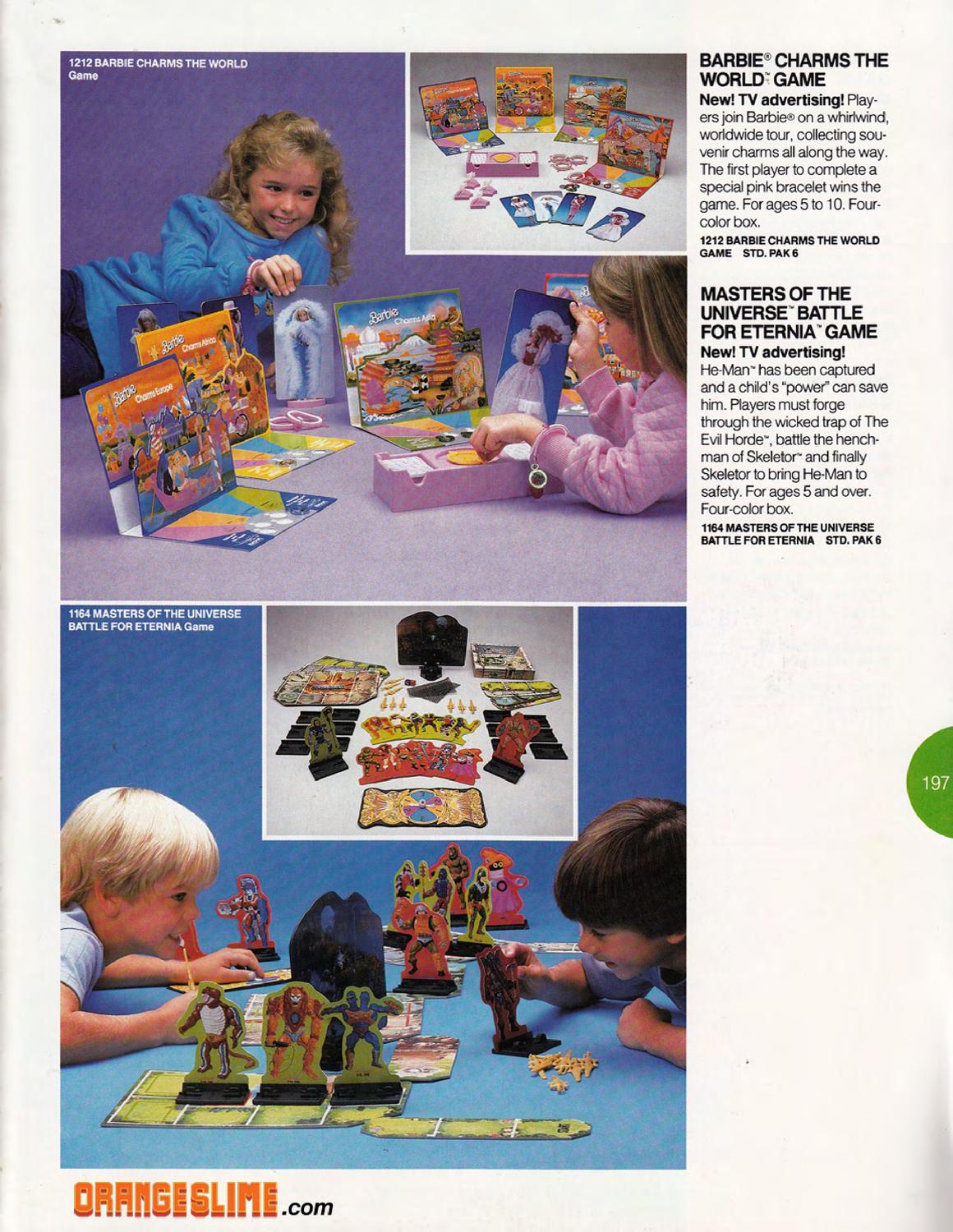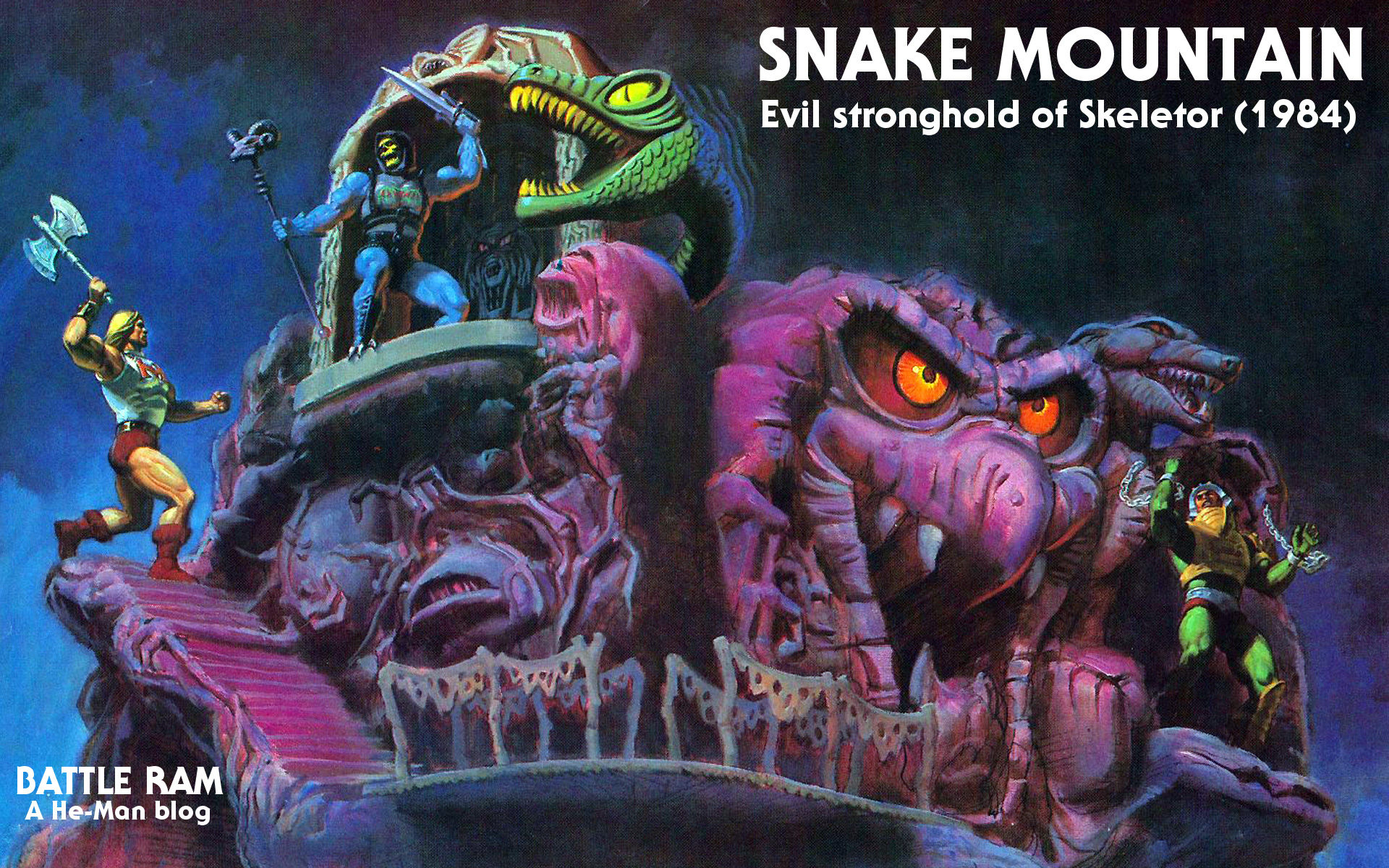
Snake Mountain was a toy I only ever saw twice as a kid. I never owned one, but I certainly admired it from afar. Up close it was perhaps not as exciting to play with as it looked (and certainly not as instantly memorable as Castle Grayskull), but as Skeletor’s evil hideout, it had undeniable evil charm.
The first known mention of Snake Mountain seems to come in the December 1, 1982 Masters of the Universe Bible by Michael Halperin. (Note: there is one episode of the Filmation cartoon (“Diamond Ray of Disappearance”) that was written a bit before that (November 30, 1982), but it was revised months later, and I don’t know if Snake Mountain was included in the original script.)
Skeletor led them to his lair beneath the twin peaks of SNAKE MOUNTAIN. Around one of the crags twisted a terrible carved snake. A portal along the snake’s back until it reached the fanged mouth. Entrance here entrapped the incautious stranger for once a person stepped into the snake’s jaws they snapped shut thrusting the trespasser into almost inescapable dungeon.
A footbridge connected one mountain with the other where a blood red waterfall cascaded over crags, past blasted trees and murky swamps. Skeletor’s chamber hid behind BLOOD FALLS and only he knew its entrance, its traps and snares. The lair itself was a dark cavern dripping with venom. In one corner, its eyes blazing red, its tail twitching, sat Skeletor’s pet and charger, the giant cat PANTHOR. Its purple fur glistened as its muscles rippled when it stretched out iron claws from the mighty paws.
In other media, Skeletor’s stronghold was being called Point Dread. The 1983 Filmation Series Guide described it this way:
Point Dread is a craggy peak emerging from the Eternian Ocean. It is an extinct volcano with a tunnel leading down to a fantastic ruined, Atlantis-like city hidden beneath the ocean floor. Inside Point Dread, Skeletor keeps all the treasure he has plundered from a thousand worlds. There are also mines and construction sites waiting for the slaves Skeletor plans to take once he has seized control of Eternia.
But the heart of Point Dread is the great council chamber where Skeletor summons the sinister Masters of the Universe. Here Skeletor sits on a raised platform above the round table where are gathered the likes of…
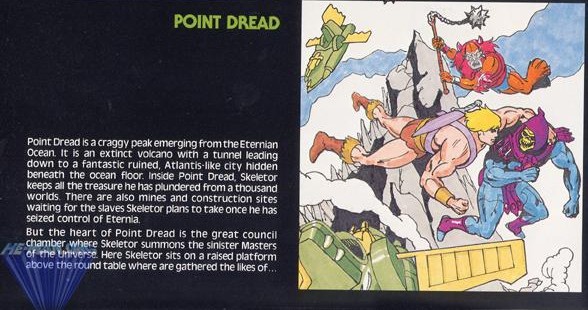
This idea was echoed in the 1985 UK MOTU Annual (the UK annuals seemed to consistently draw on older source material):
In the end, Point Dread became the magical/technological moving perch of the Talon Fighter, which could relocate from the top of a mountain to the top of Castle Grayskull. Snake Mountain became the fortress of Skeletor.
In September of 1983, when the He-Man cartoon debuted, kids were introduced to Snake Mountain for the first time. It was an imposing structure – a large pointed peak punctuated with jagged “teeth” and a giant snake carving wrapped around it. Nearby was another, smaller peak, and Blood Falls flowed in between them:

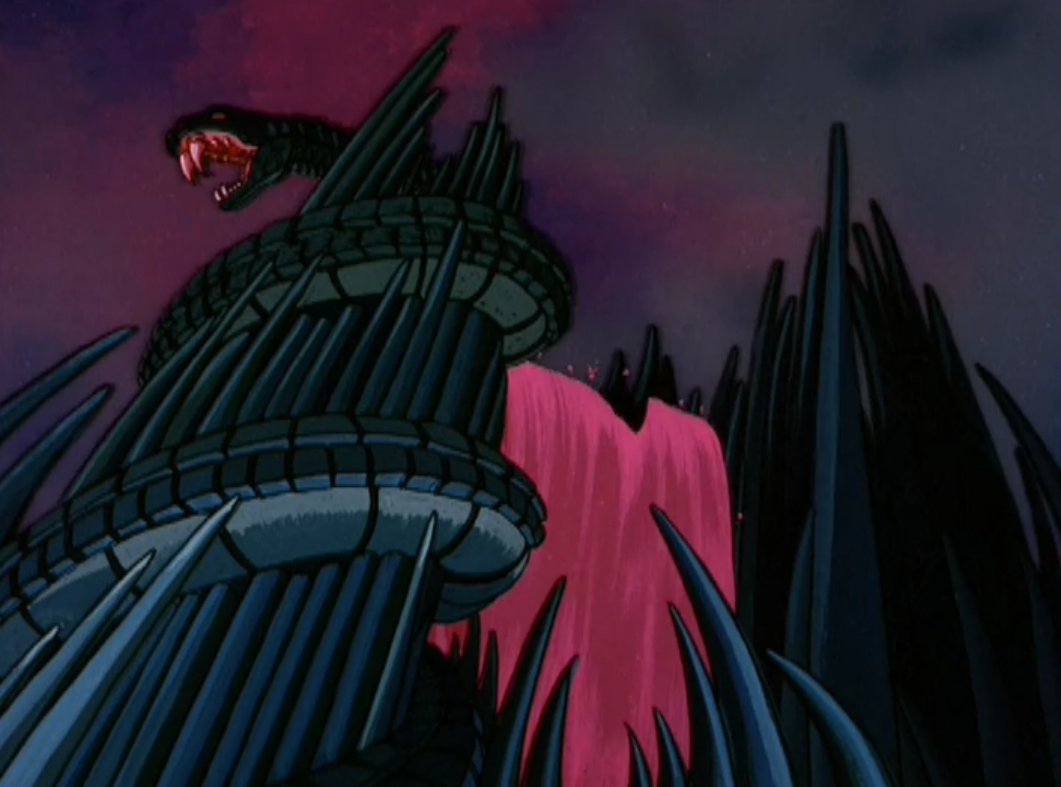
The interior of the mountain featured a bone throne and a table with a magical globe for spying on enemies, a docking bay for Skeletor’s fleet of vehicles, various creepy creatures, and myriad twisting passageways. The snake carving was also hollow, and Skeletor could stand in the open mouth and overlook his dark domain:
Snake Mountain was trademarked by Mattel on August 15 of 1983. At some point in 1983 Mattel started working on the playset design. Rather than basing the toy off of Filmation’s fortress, they elected to come up with a completely different look, based off of a previous jungle playset design that had been abandoned:
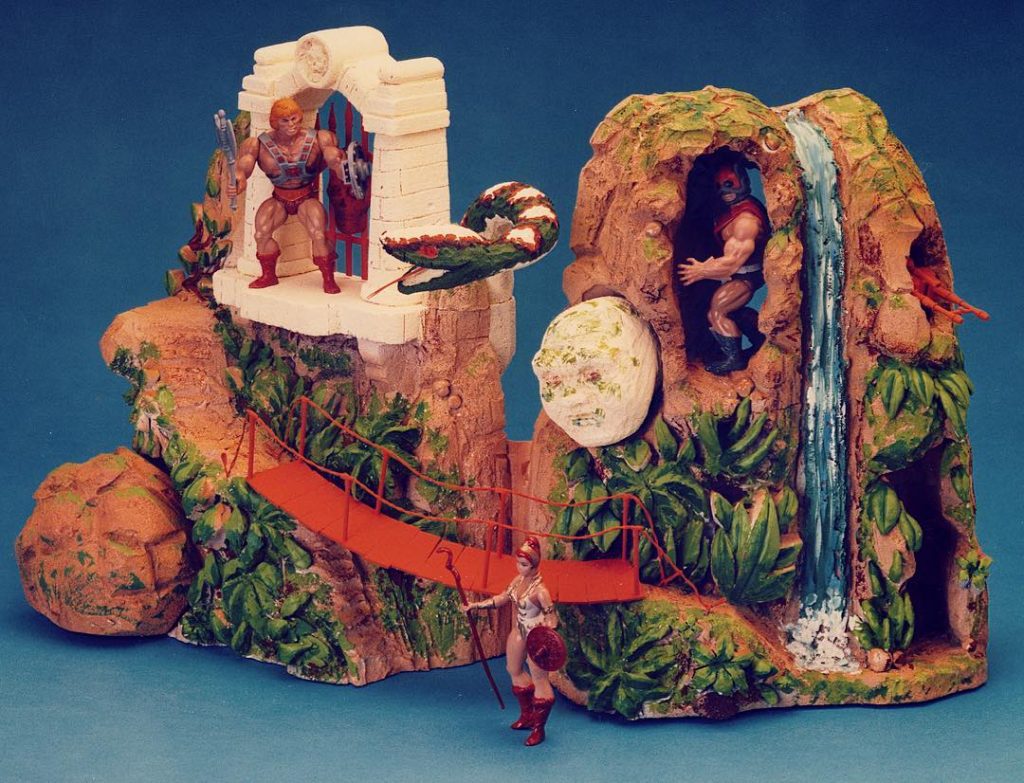
Mattel wasn’t saving any tooling by reusing the idea, but perhaps it was a way to quickly re-sculpt a previous effort into a viable product.
Colin Bailey did some of the preliminary design work on the toy, as is visible in this design drawing from The Power and the Honor Foundation Catalog:

His drawing is simply called “Skeletor Playset” and shows the goblin-like face and manacles that would be built into the right half of the design.
The main attractions of of the playset are clustered on the exterior – the shackles, the “talking” goblin face, the wolf echo microphone, the bridge (a fragile piece even in the 80s, and too narrow for figures to cross any way but sideways), numerous semi-hidden sculpted faces and claw-like root structures, the stairway, the gate and trap door, and the “striking” snake. There was also a scaling ladder, reused from the original Castle Grayskull playset.
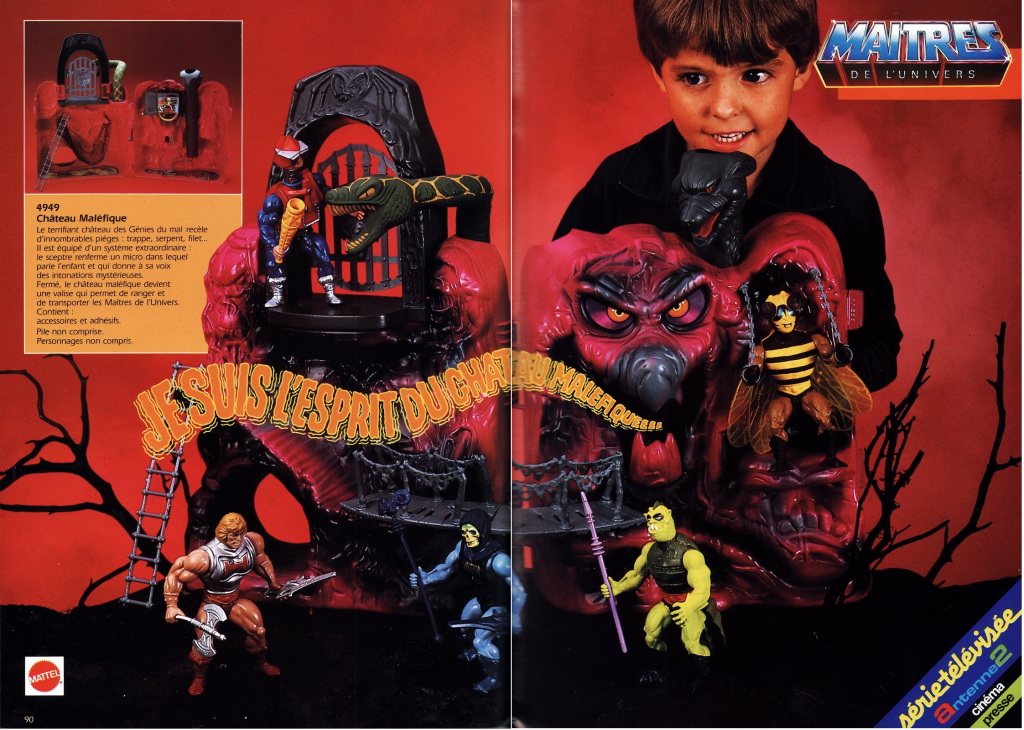

The interior was pretty bare bones by comparison. There was a net to catch warriors who fell through the trap door, there was a volume control/switch for the echo microphone, and a couple of stickers on the floor. The goblin mouth could be articulated from the rear.
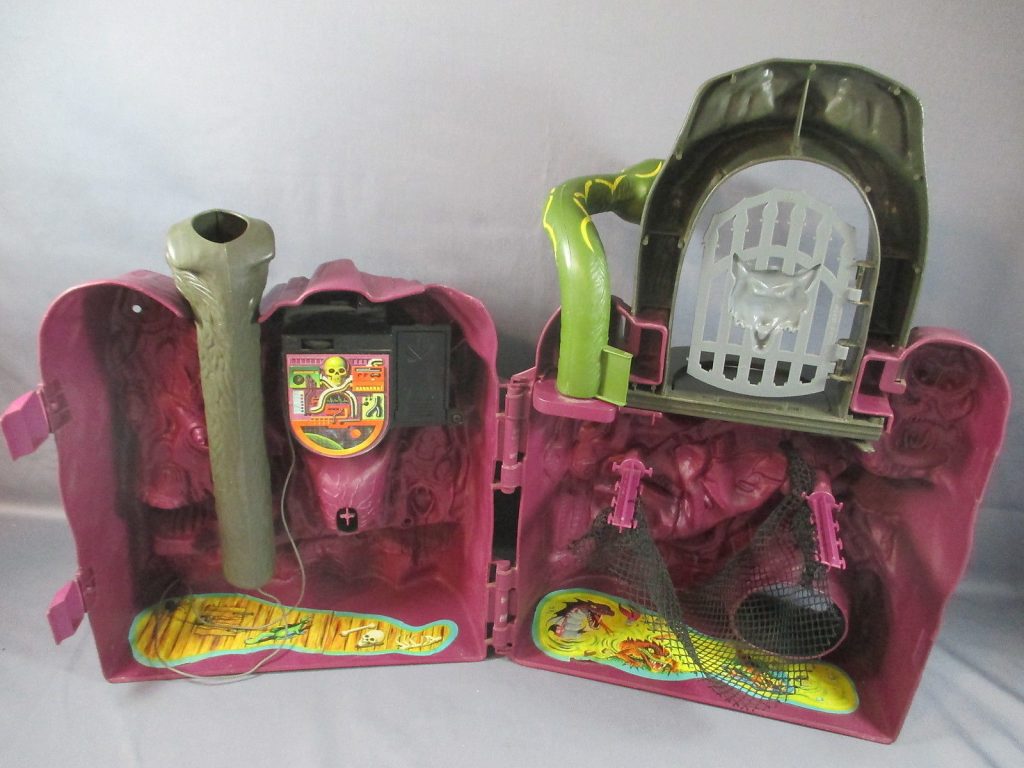
The box art was painted by William George. Early versions of the art, dated 1983, show Man-E-Faces in shackles, but the final artwork replaced him with Man-At-Arms. For more on that read this interview with Bob Nall, by Jukka Issakainen.
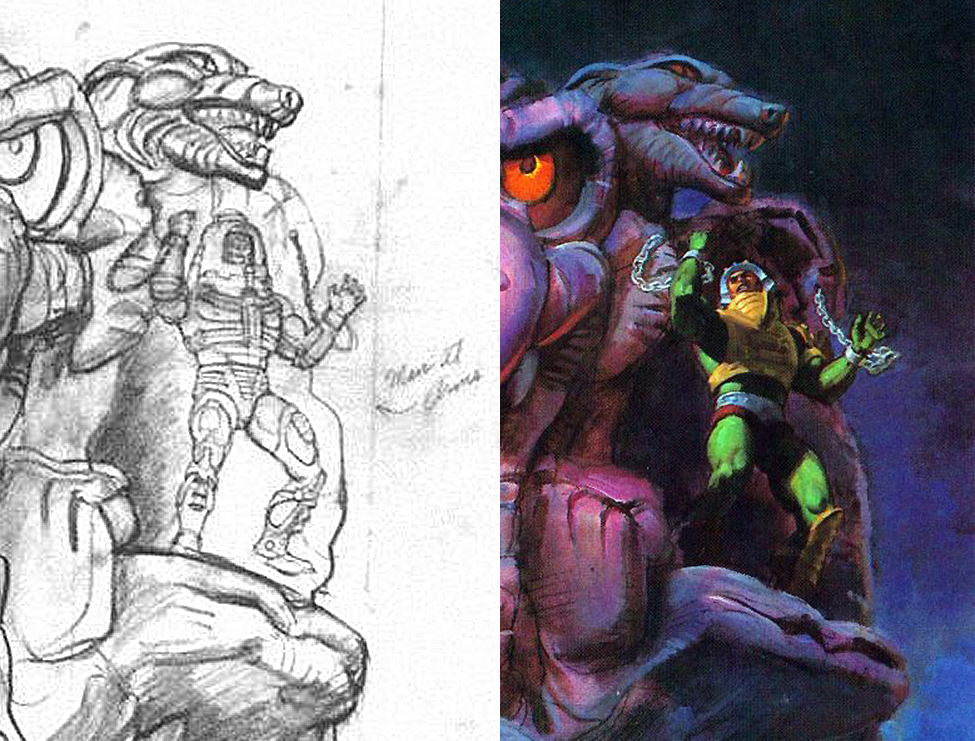



There were a couple of variations on the packaging. In some versions, the mountain is quoted as saying “I am the spirit of Snake Mountain” and in others it says “I am the voice of Snake Mountain.” I don’t know the reason for the change, but if I had to guess it would be because some parents might have objected to the “spirit” of Snake Mountain for religious reasons.
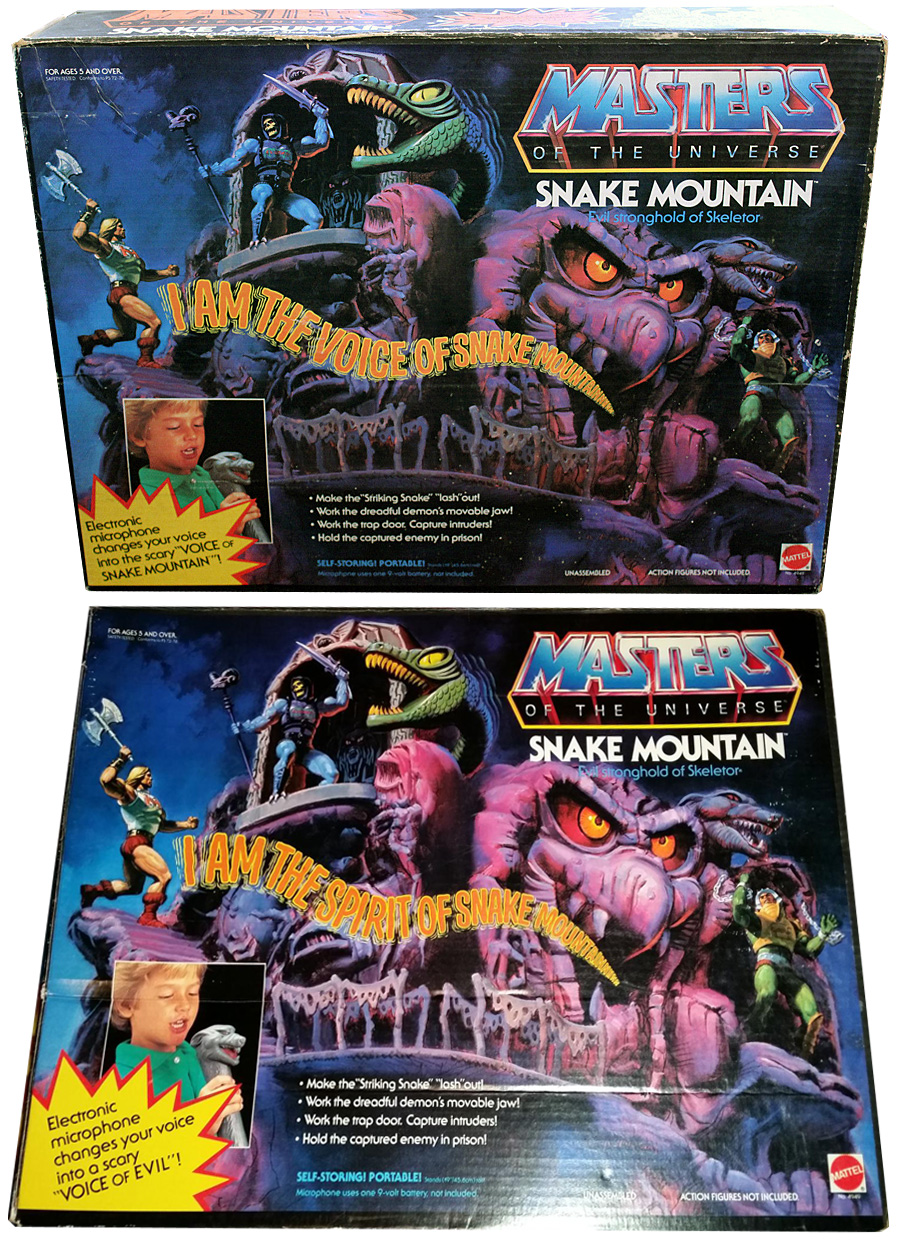
As a playset, Snake Mountain felt a bit undersized compared to Castle Grayskull. It was technically taller, but only because of the archway. The rest of the playset was about 25% shorter, and the stairs were out of scale with the chunky He-Man figures. It was still an impressive and coveted item, but it paled in comparison to Grayskull.
According to the 1987 Style Guide, Snake Mountain was the “talking mountain of evil.” The style guide gives the mountain several characteristics that were never used in any canonical materials, to my knowledge:
Power: Ultimate evil power center, which commands and controls Skeletor and his minions.
Character Profile: Snake Mountain is the home base for the Evil Warriors. Within it resides the horrible spirits of the Lords of Destruction. It is from these wicked spirits that Skeletor and his henchmen draw their evil power. A baffling series of catacombs are built beneath Snake Mountain. Exploration there has been limited; even Skeletor is fearful of what may reside there.
Errol McCarthy did the artwork for the Style Guide, and depicted Snake Mountain in several other illustrations as well:
Snake Mountain’s first several appearances in the minicomics follows the toy design. You can see that here in Siege of Avion and The Obelisk, illustrated by Alfredo Alcala:
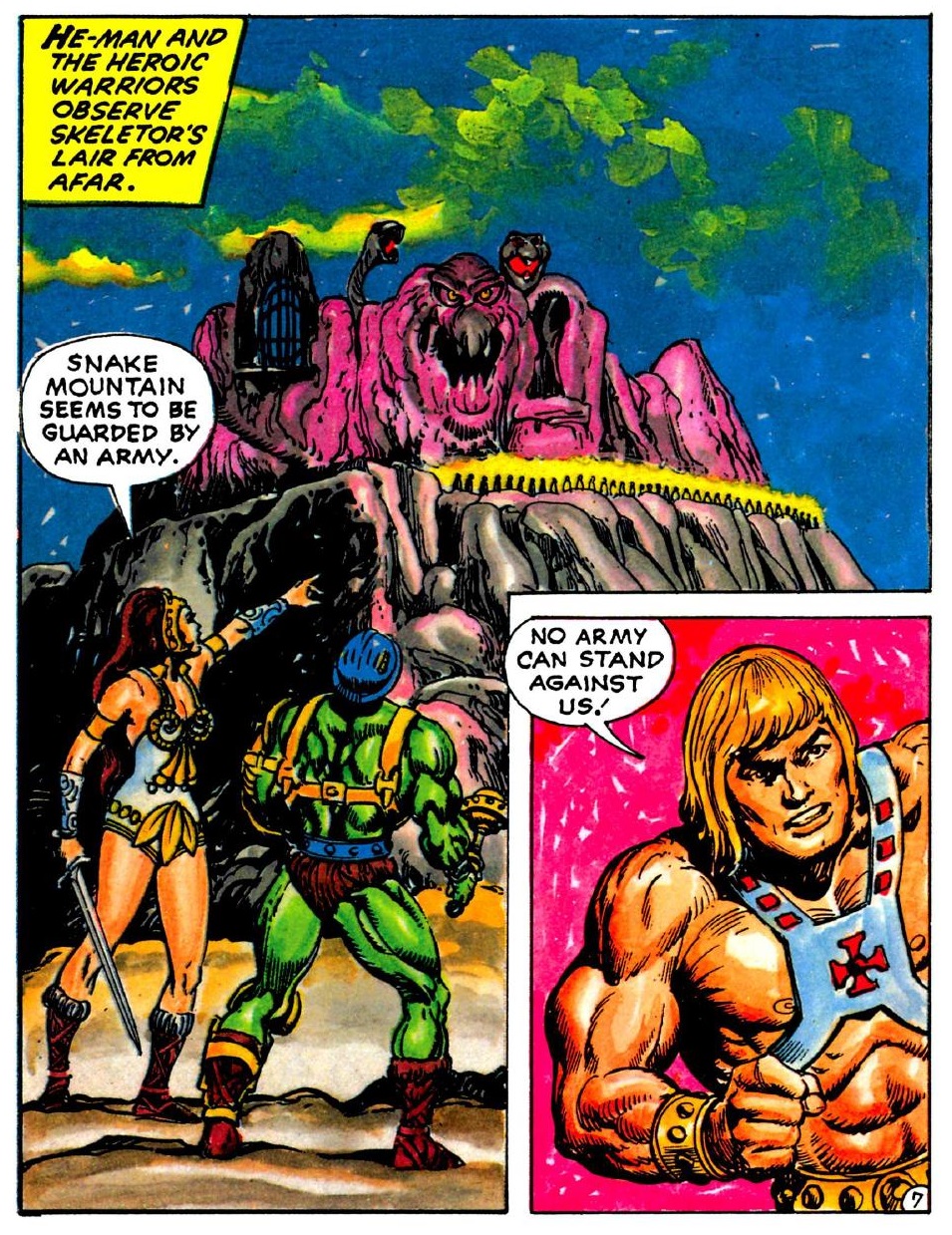

In The Clash of Arms, illustrated by Larry Houston, a simplified version of Filmation’s Snake Mountain makes its minicomic debut:

With the advent of the Snake Men in 1986, Snake Mountain was reimagined as having been the fortress of King Hiss and his minions thousands of years in the past, before they were locked away in a pool of energy (the “Pool of Power”) in the caverns under the mountain:
In the 1986 Kid Stuff story book/record, Battle Under Snake Mountain, the fortress seems to be under the control of King Hiss, with no mention of Skeletor at all:
When Snake Mountain appears in the Golden Books stories, it is typically modeled after the toy:
The UK Masters of the Universe comic series (issue 22, 1987) tried to harmonize the toy and Filmation designs, although the reasoning used (Skeletor needed more protection, and so rebuilt the mountain) seems to require more explanation – I don’t quite follow the logic here:
Snake Mountain, in its toy form, makes an appearance in all of the posters illustrated by William George for the toyline:
The fortress also appears in posters by Esteban Maroto and Earl Norem:

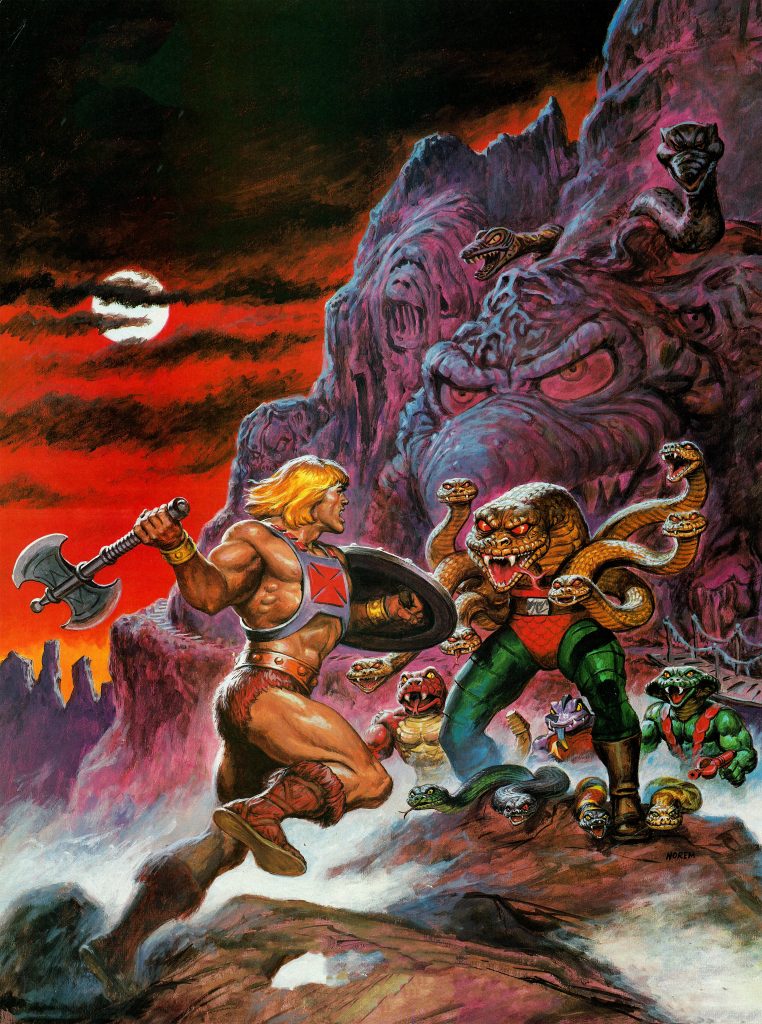
Skeletor’s stronghold was also used to sell other Masters-related merchandise, including games, puzzles, and even a themed Hot Wheels stunt set:
Snake Mountain had a lot to live up to, following Castle Grayskull. It could never quite measure up to it, but it wasn’t for lack of trying. The design itself was certainly creepy, although perhaps in a more childish kind of way compared to Grayskull. It gave you a lot to look at and a lot to play with, but lacked the depth and archetypal pull of its predecessor.
